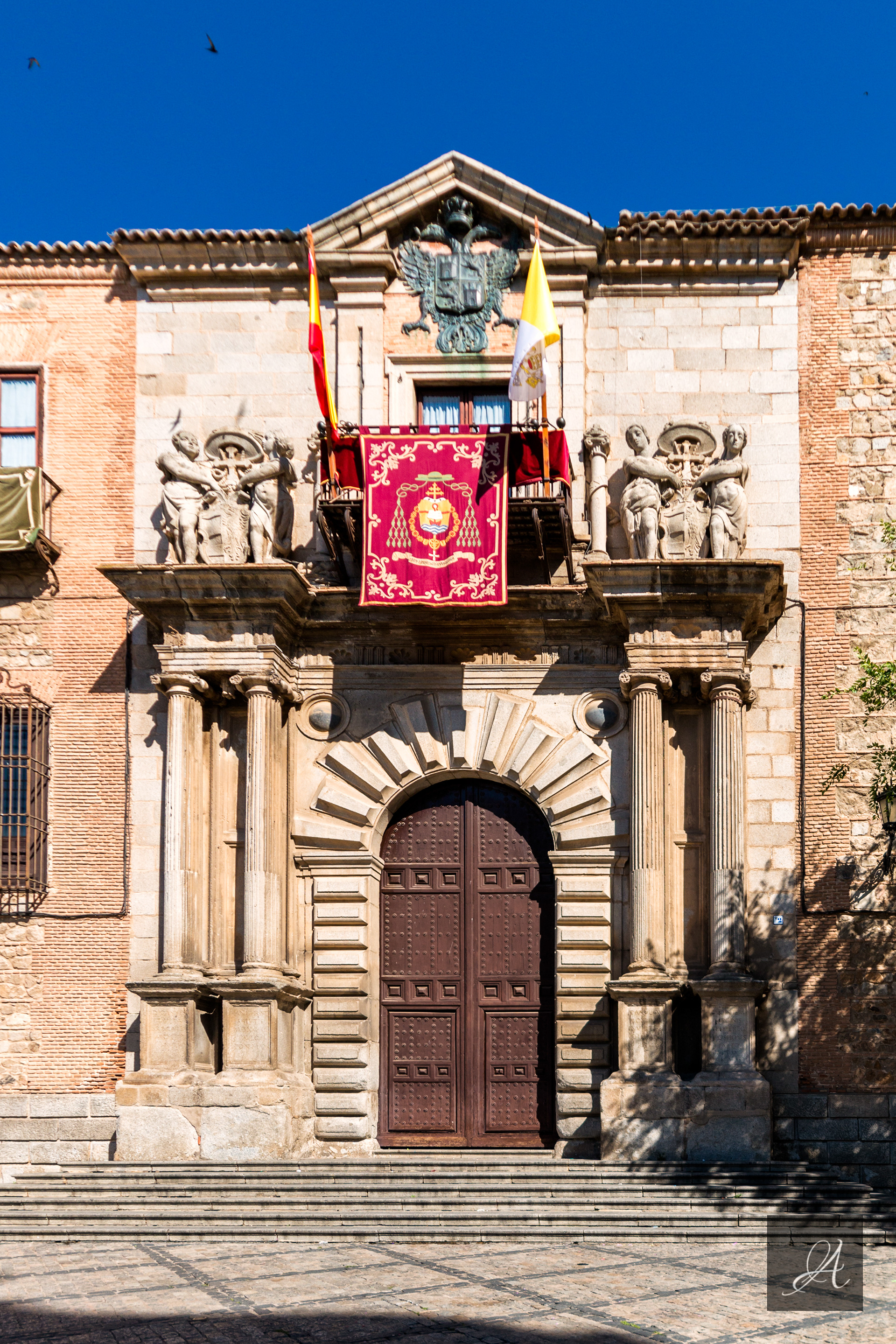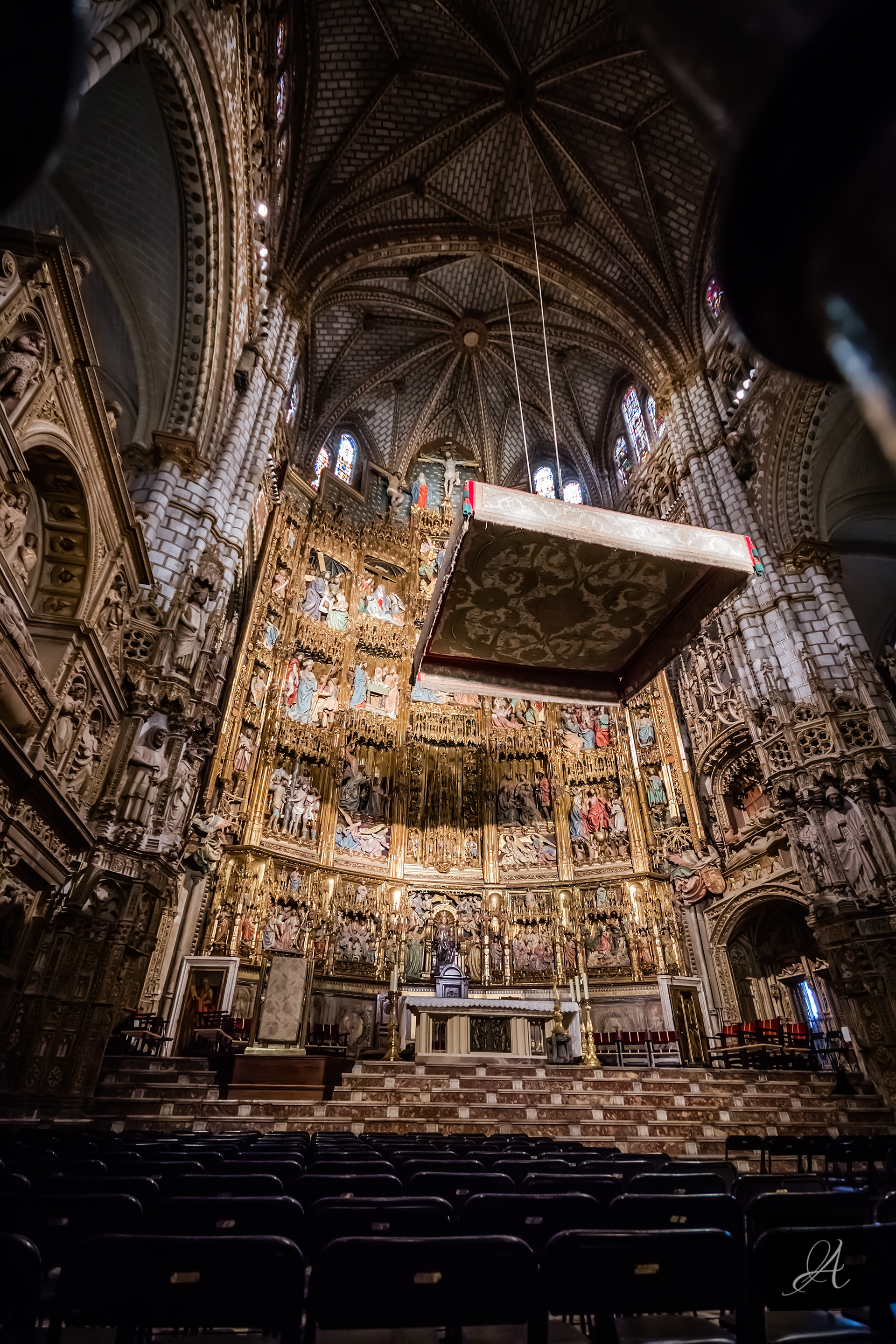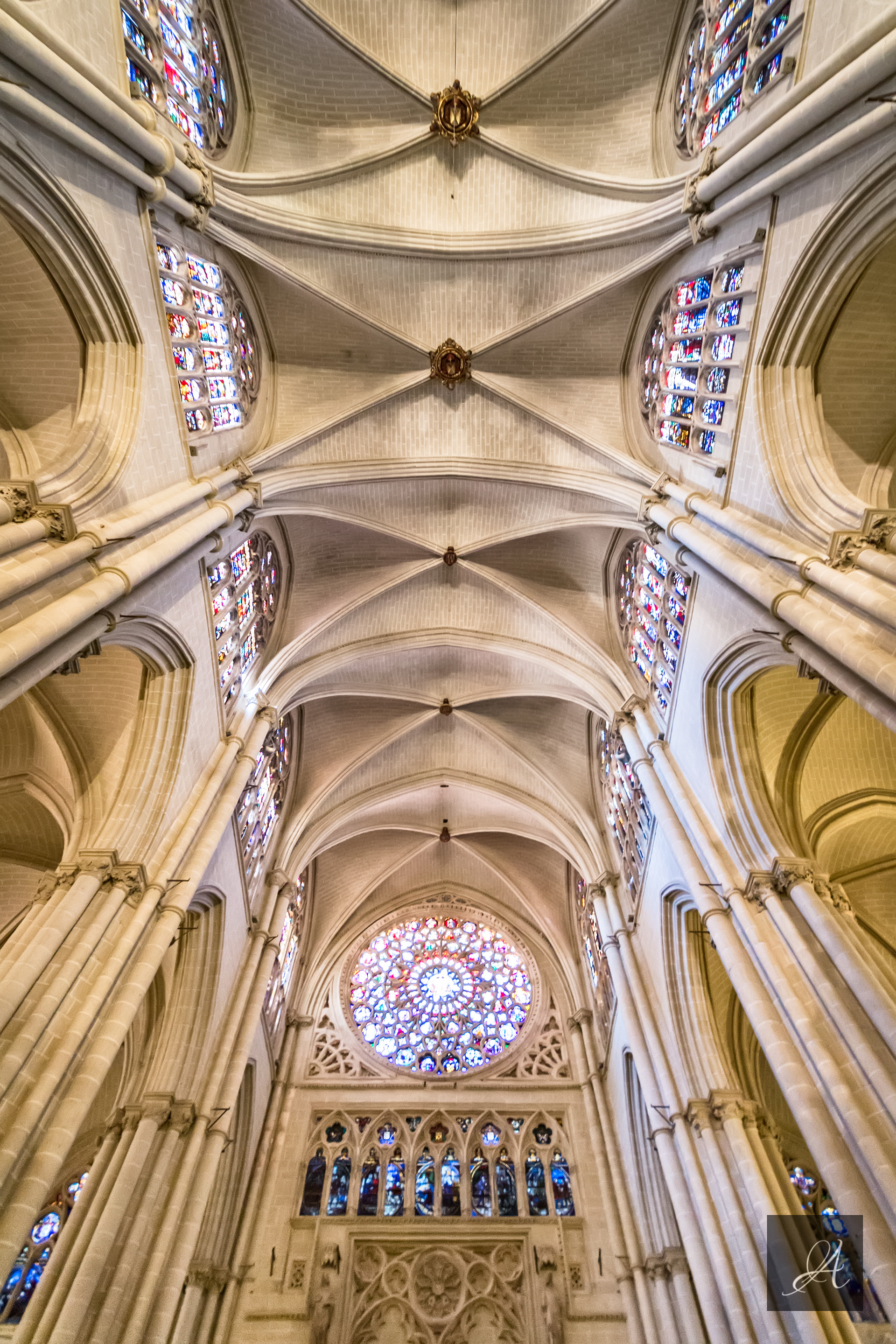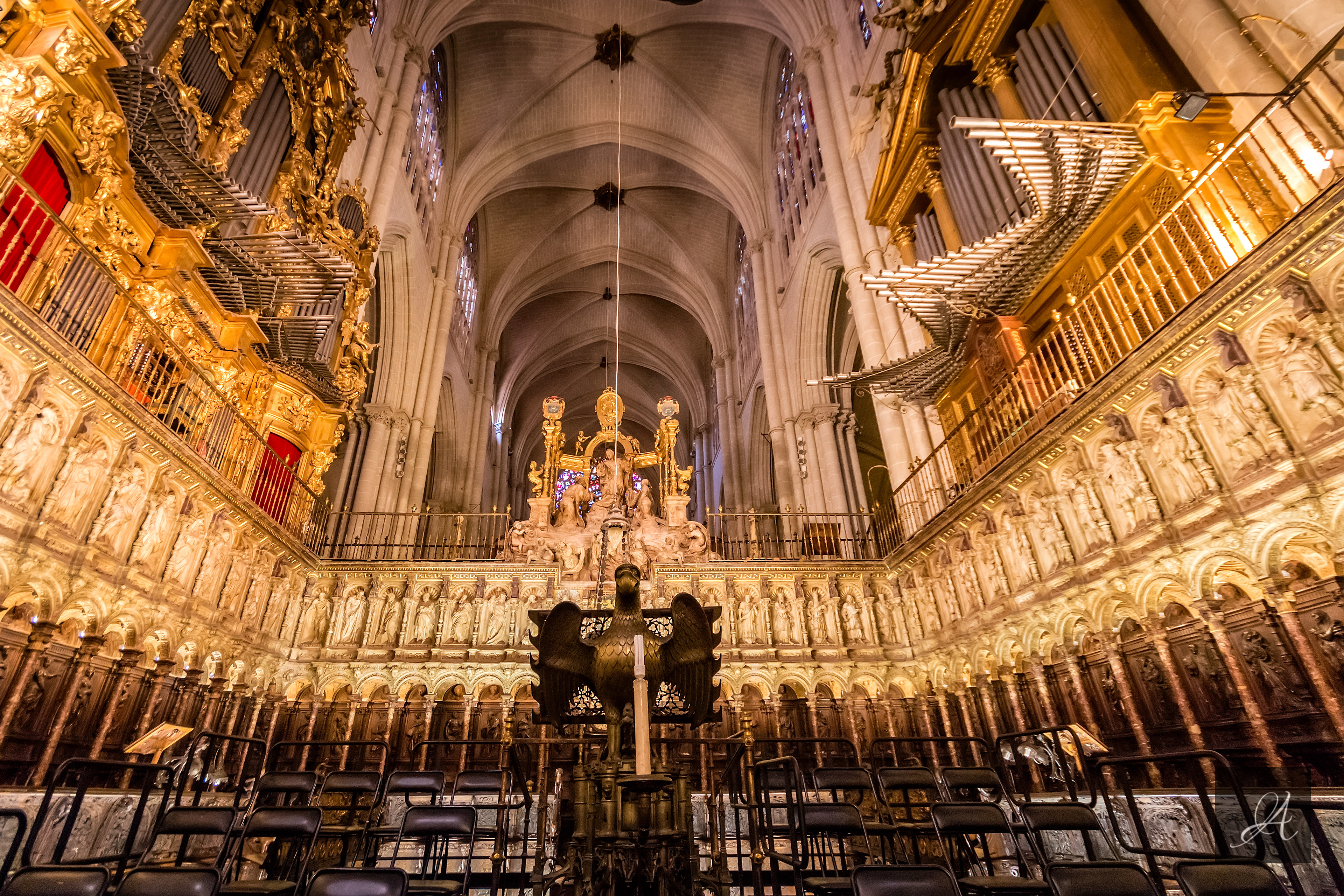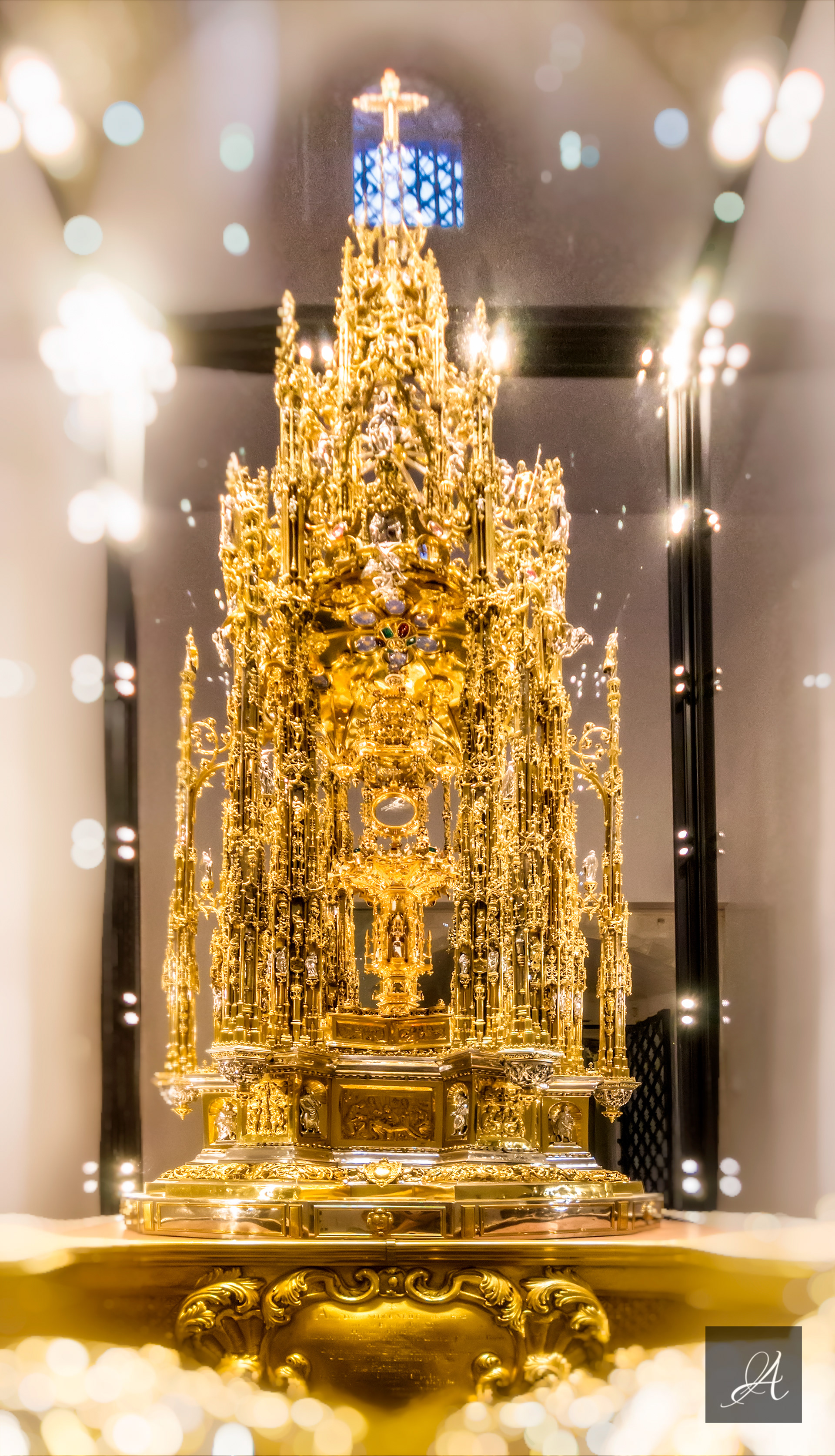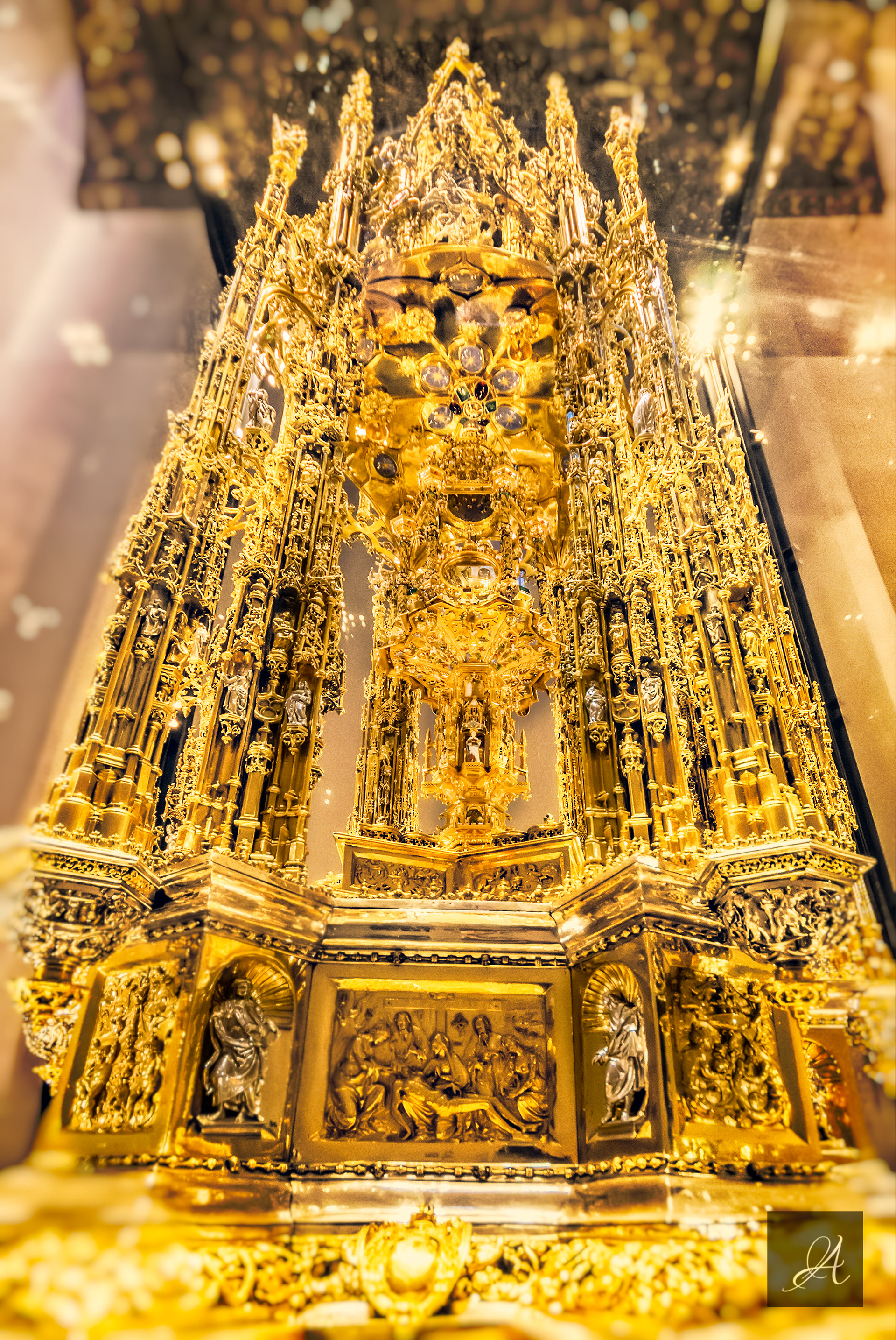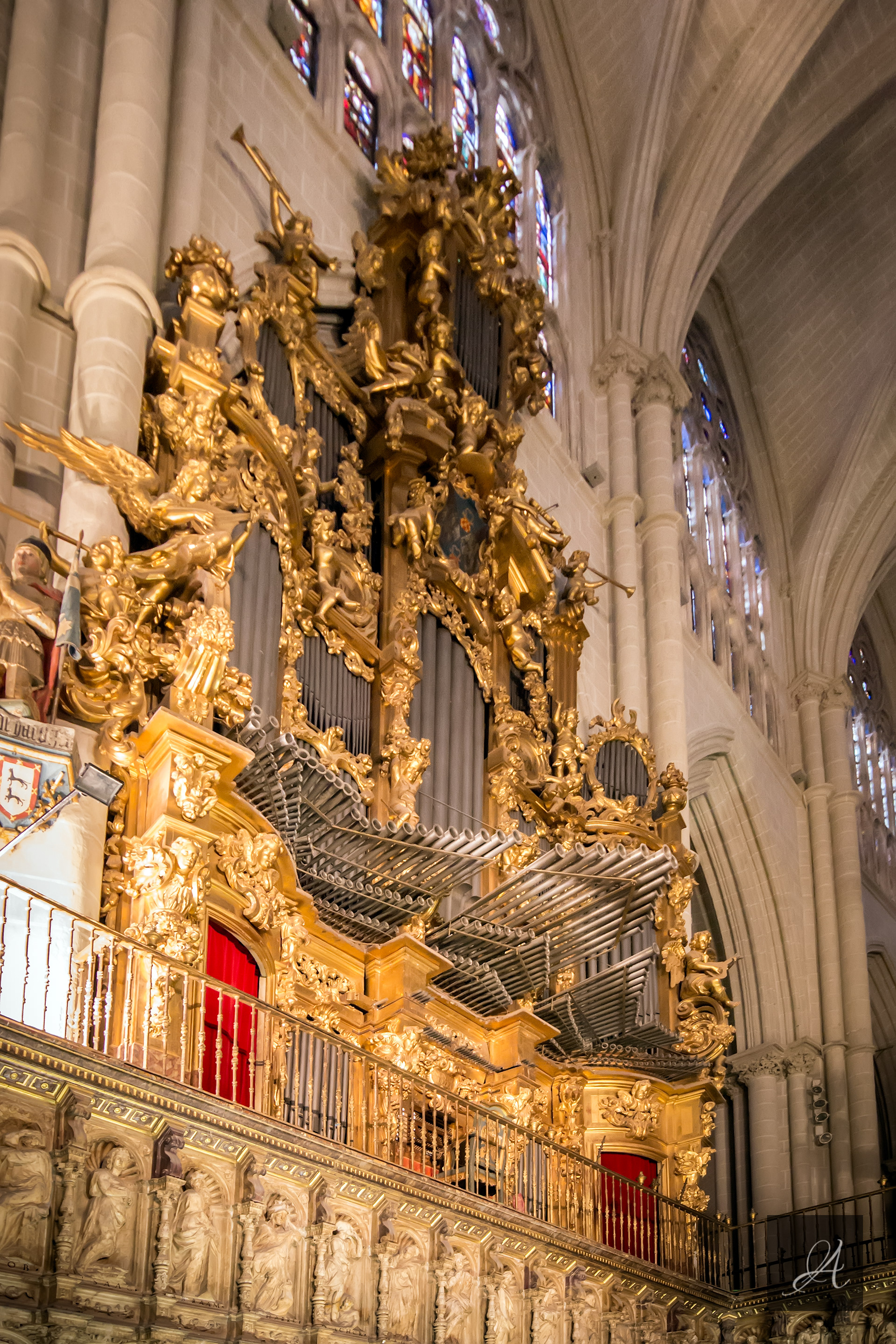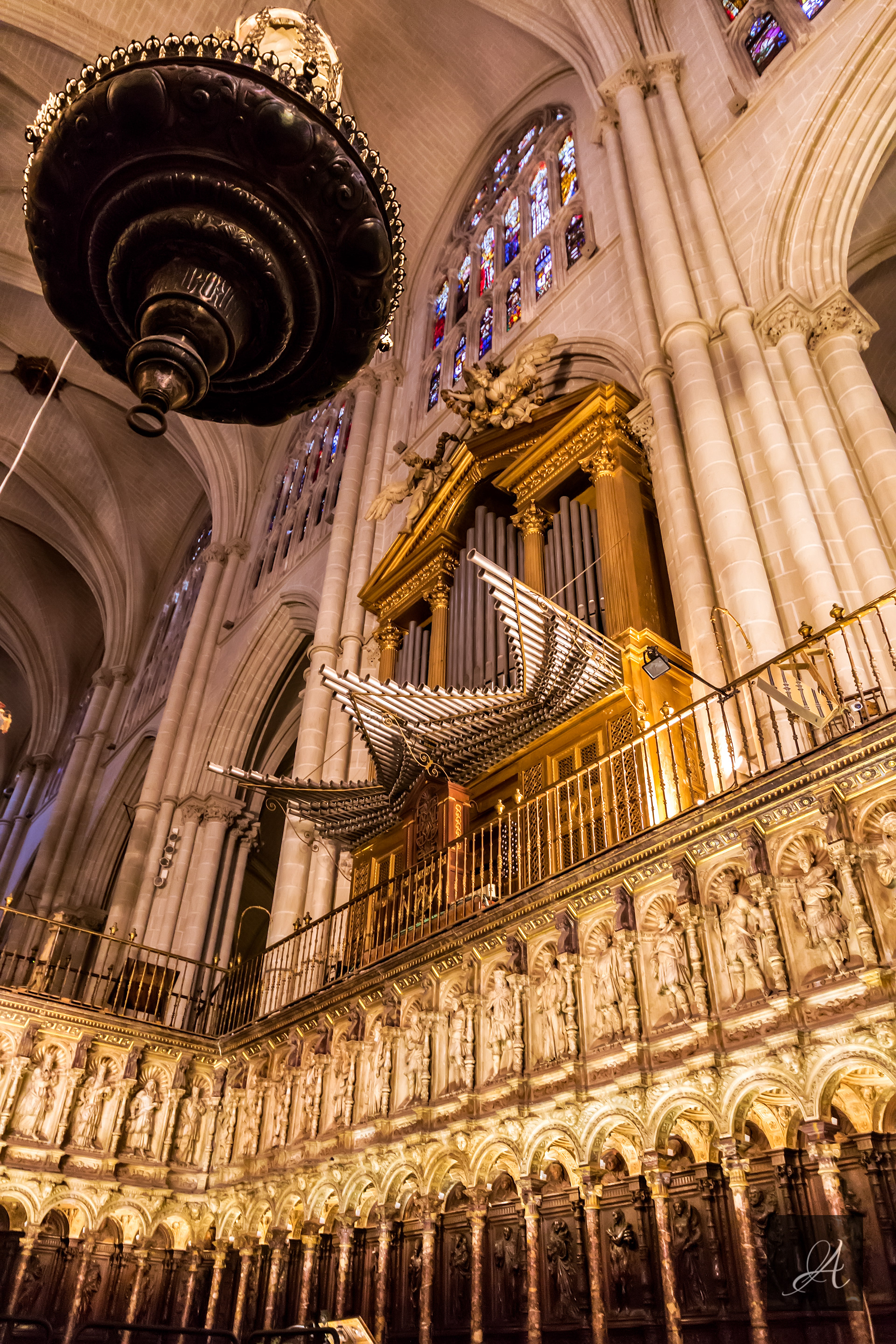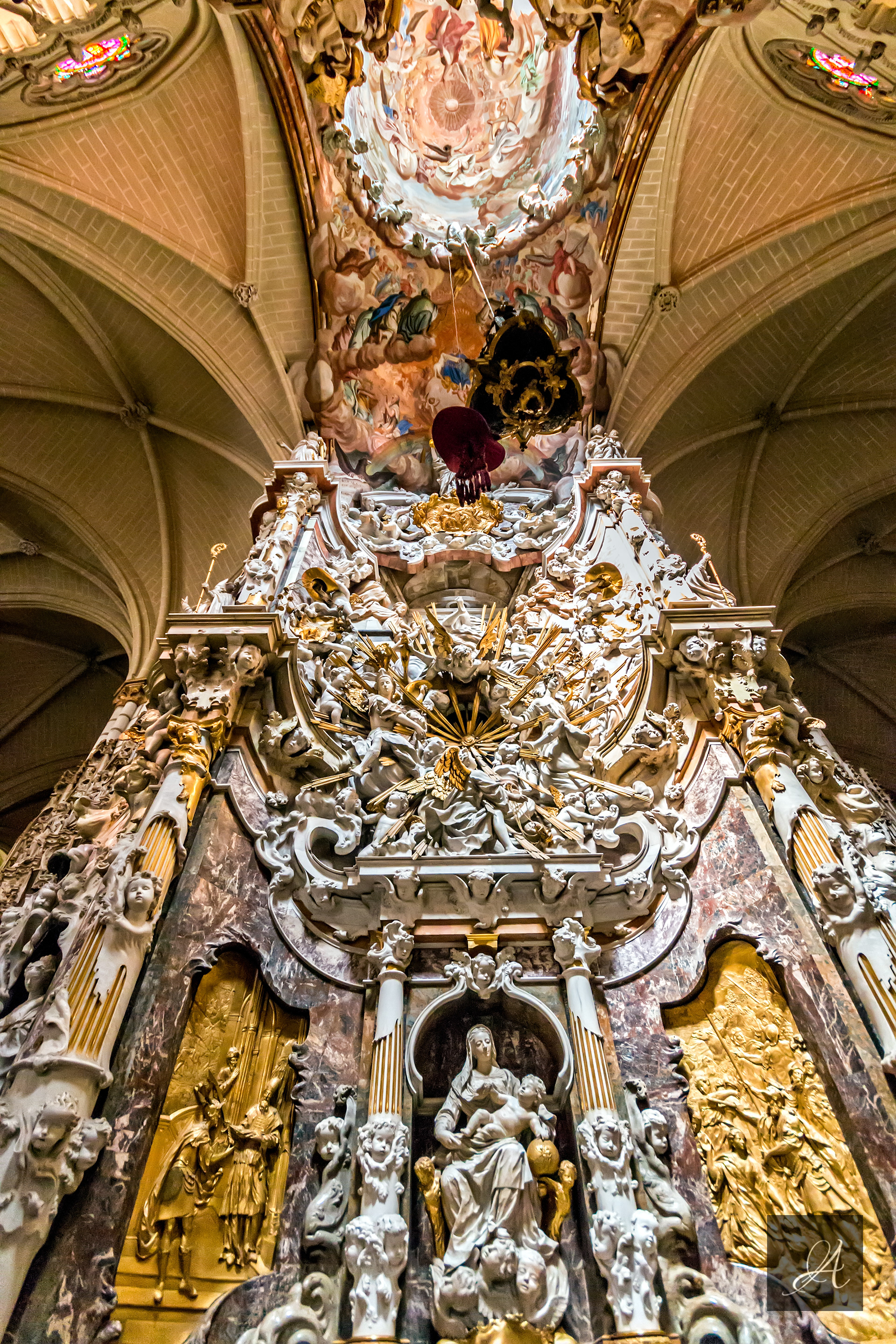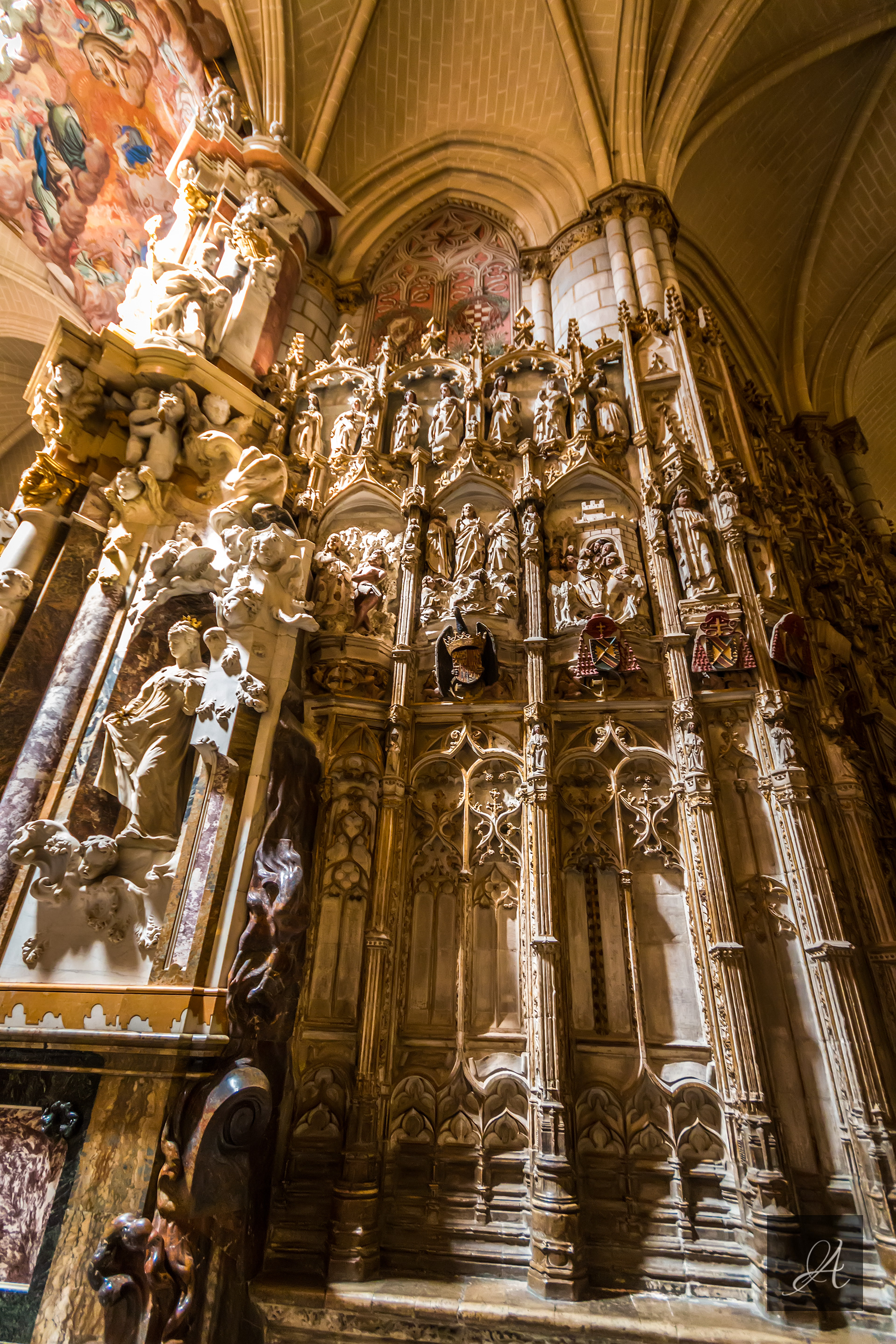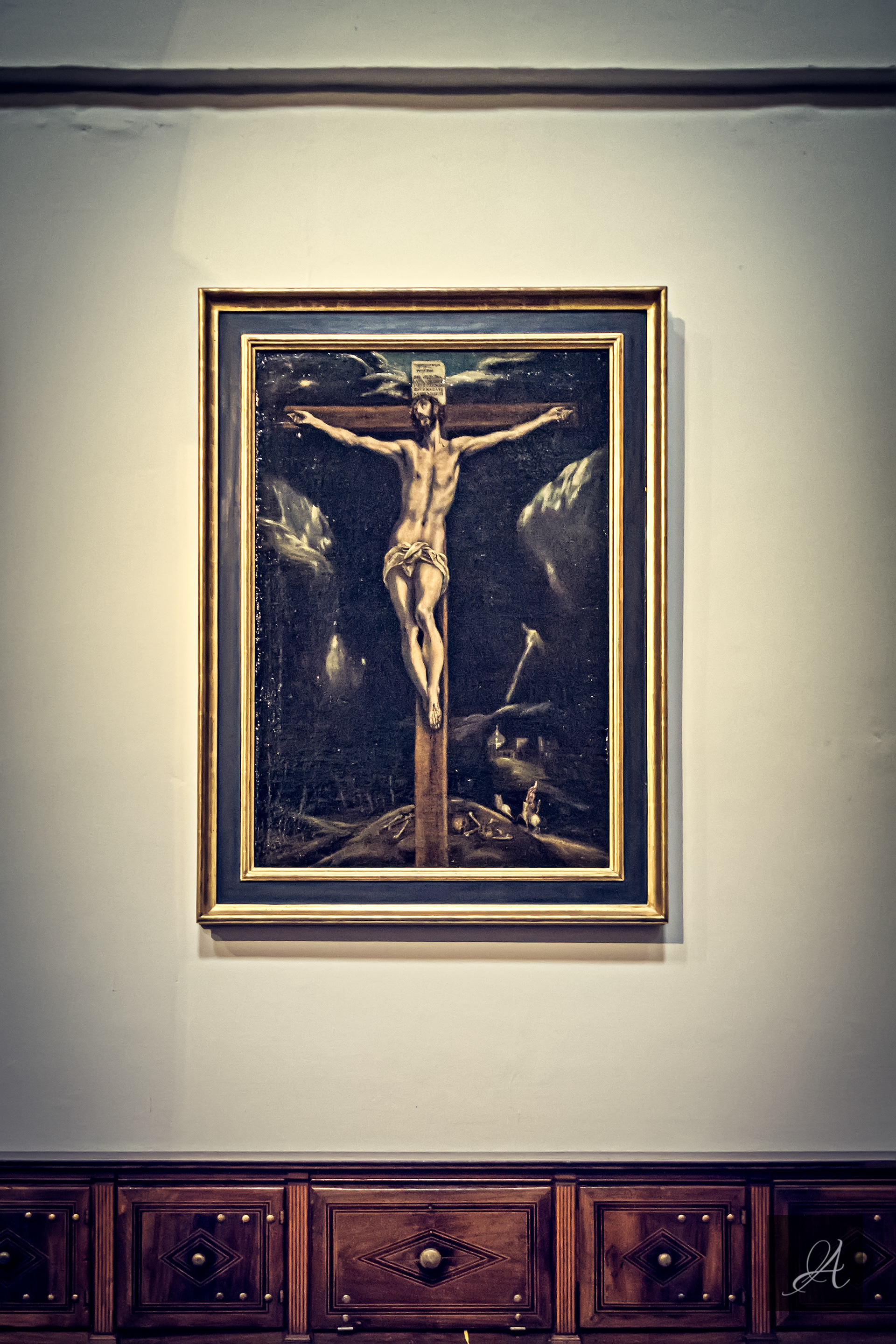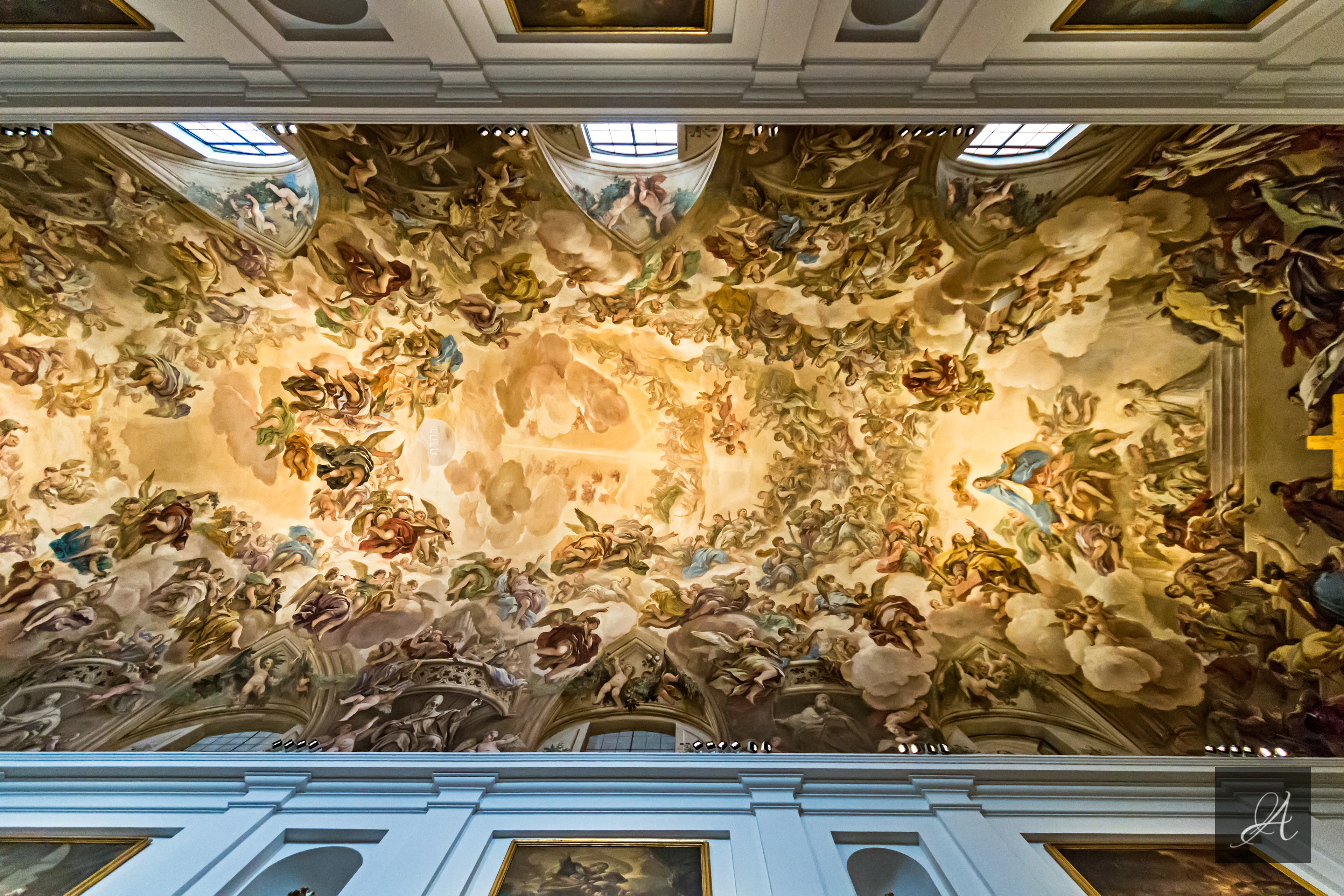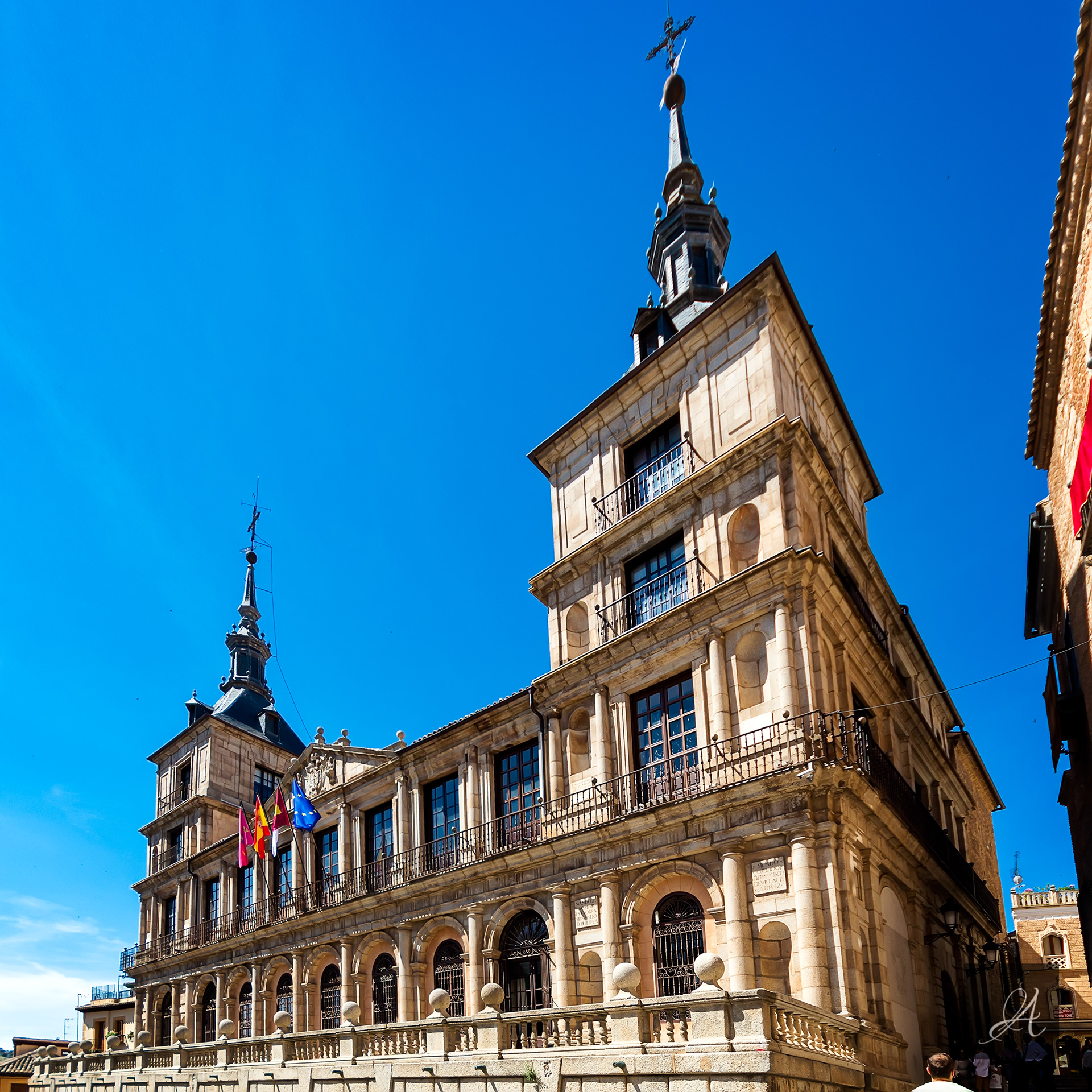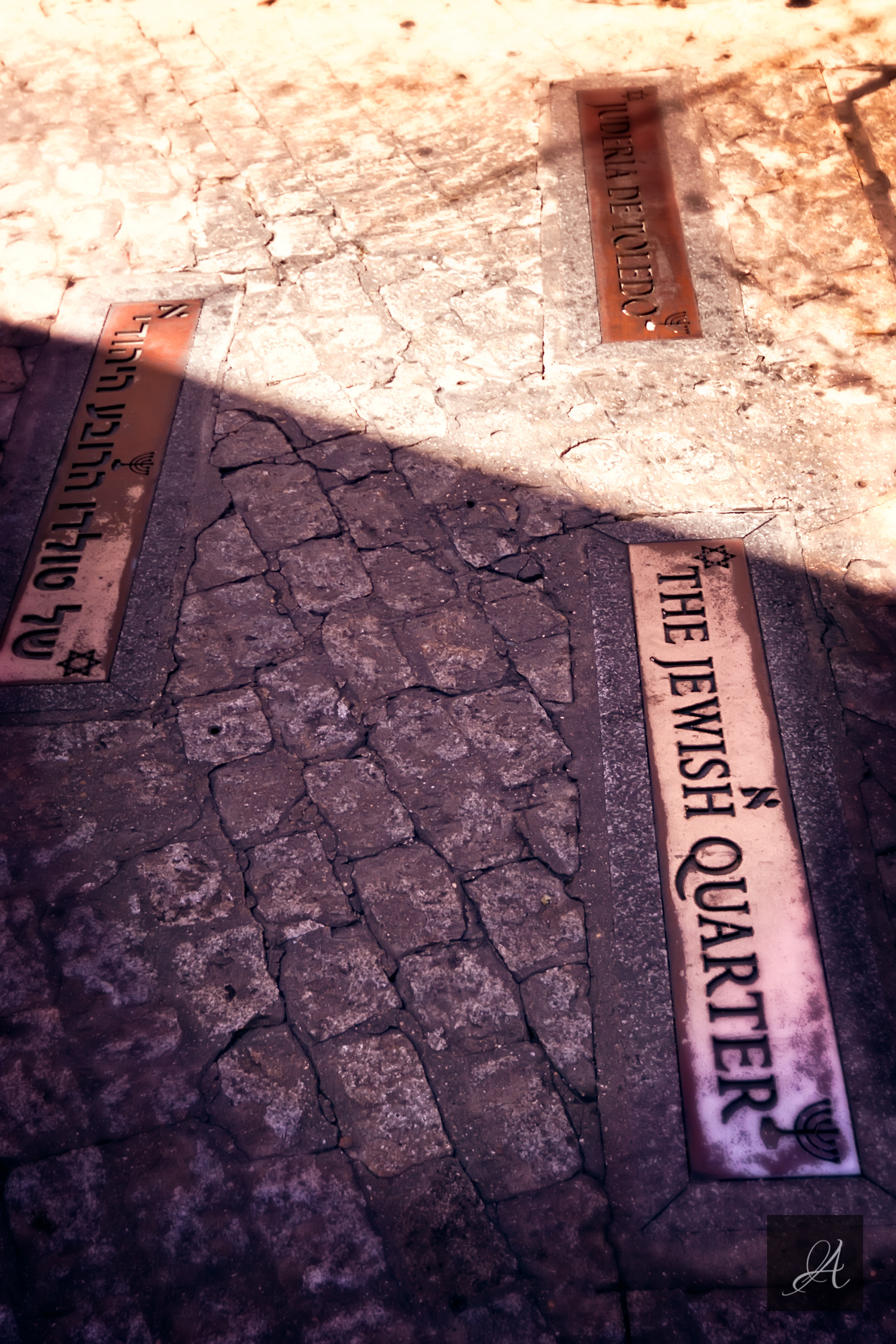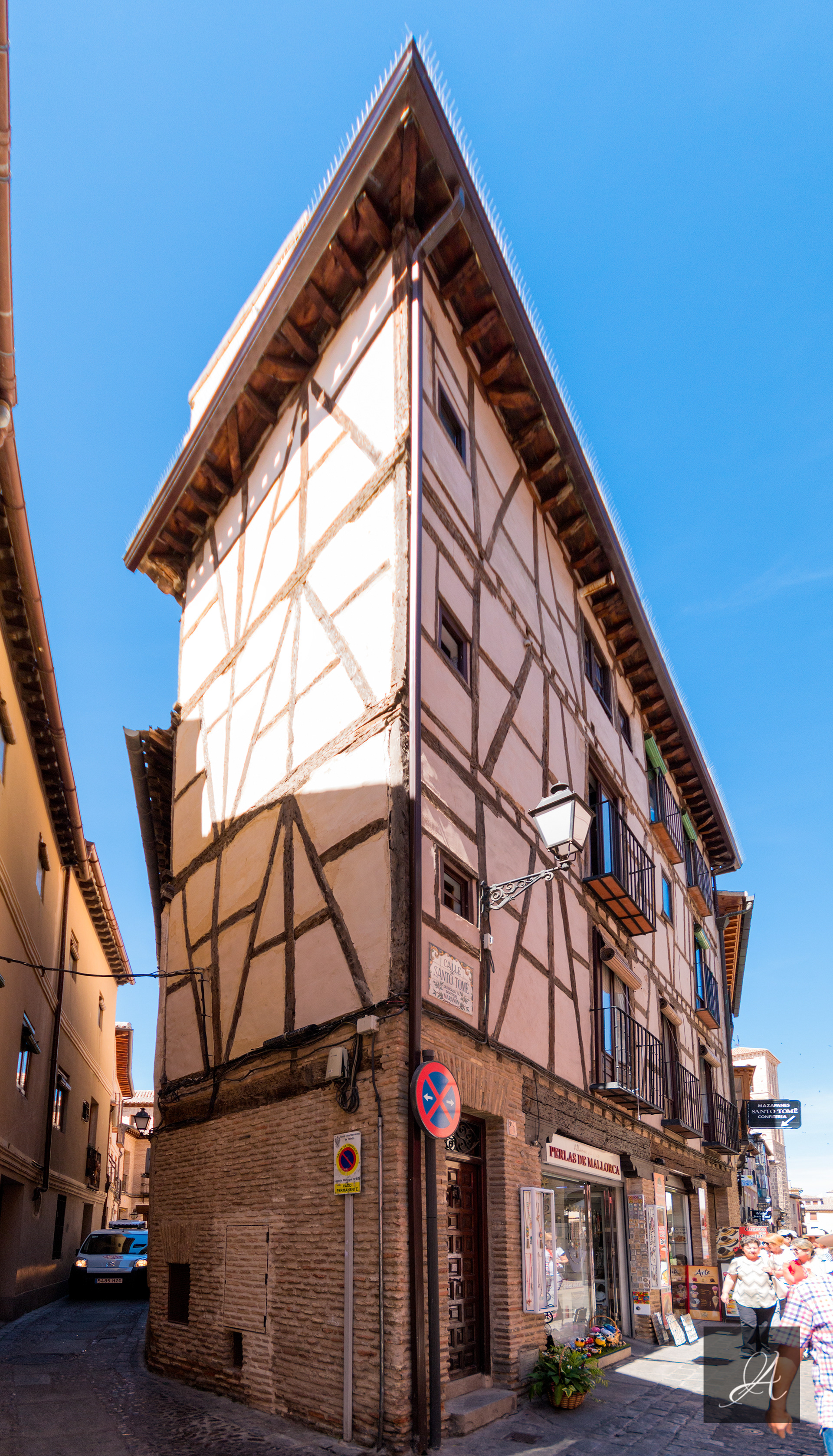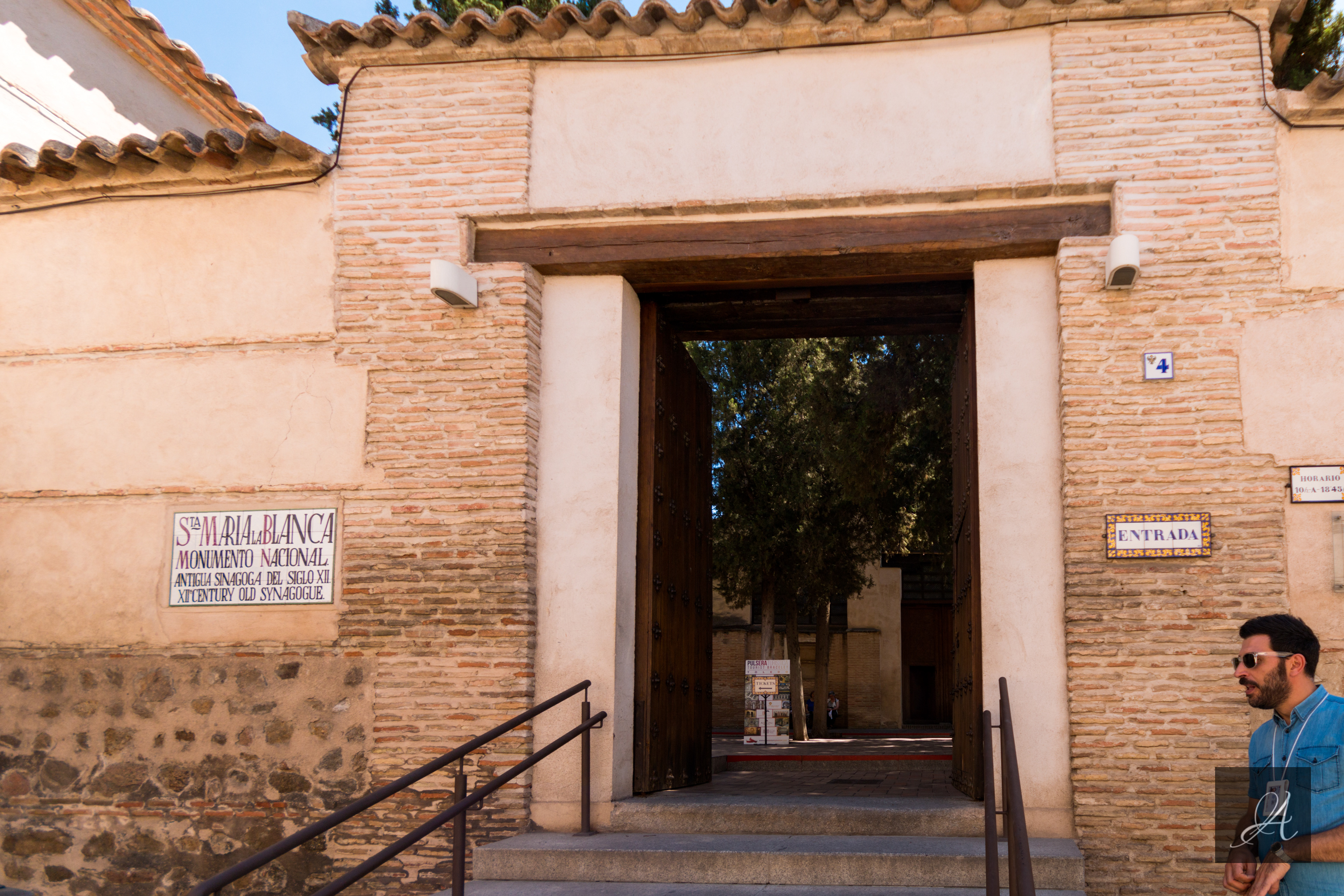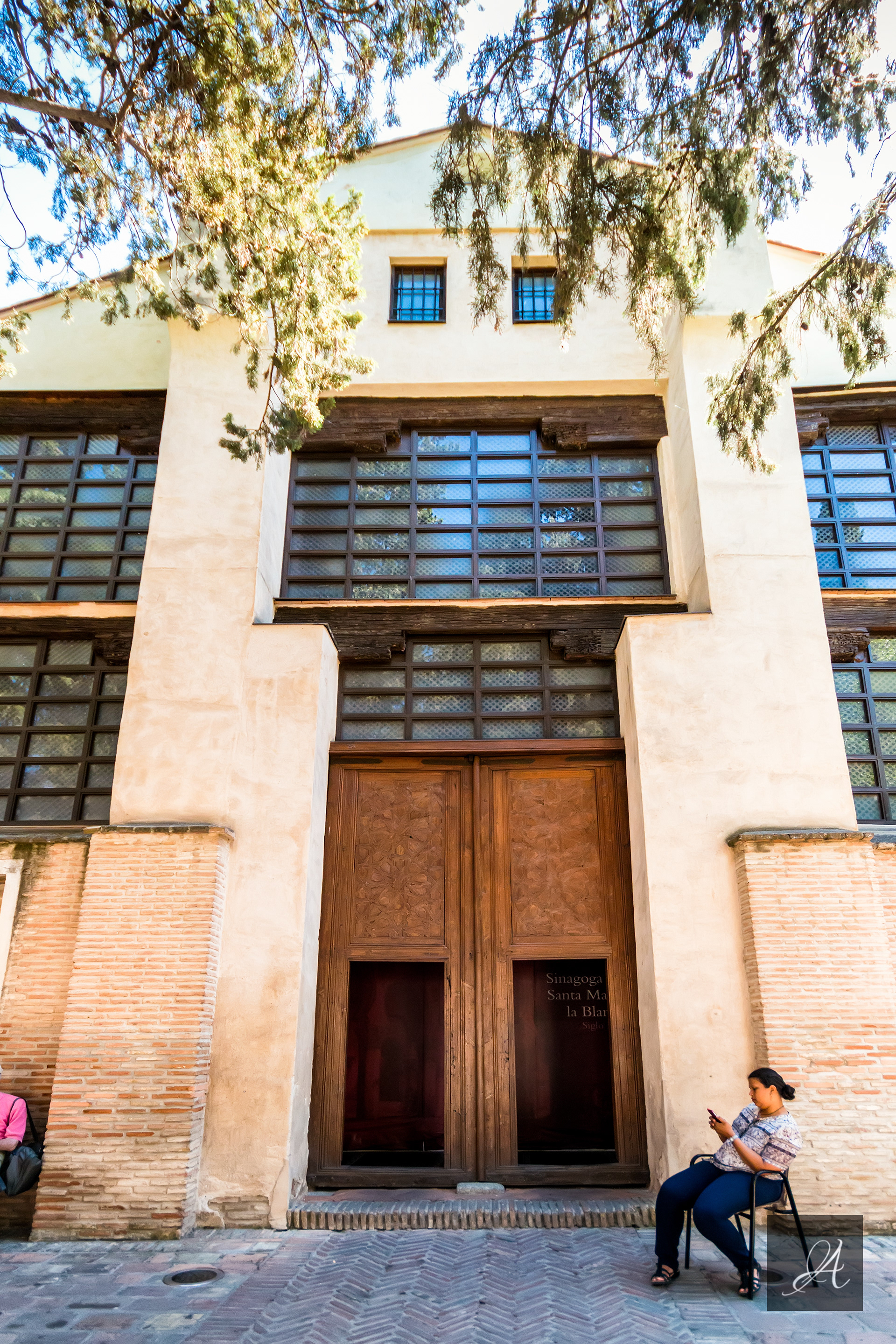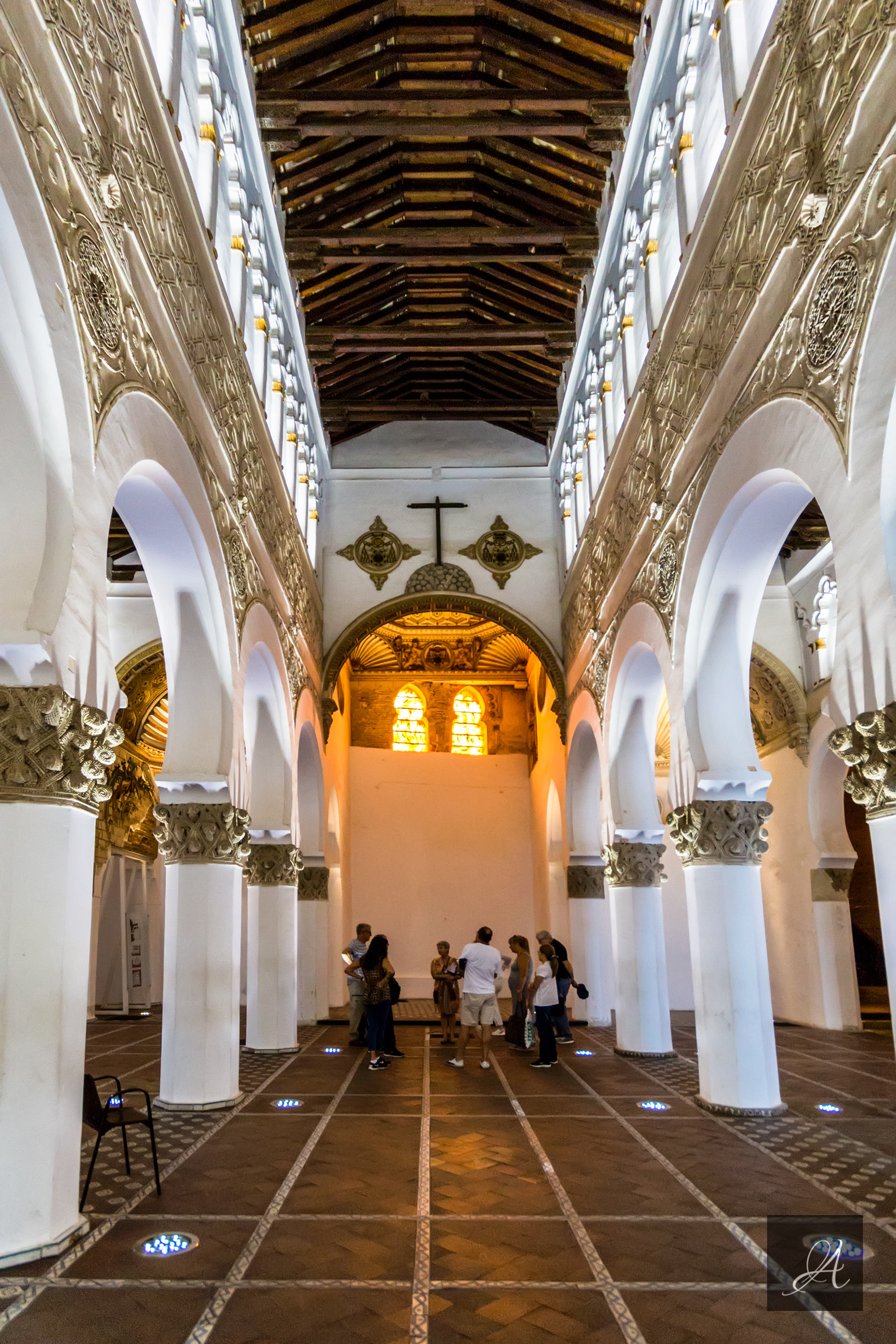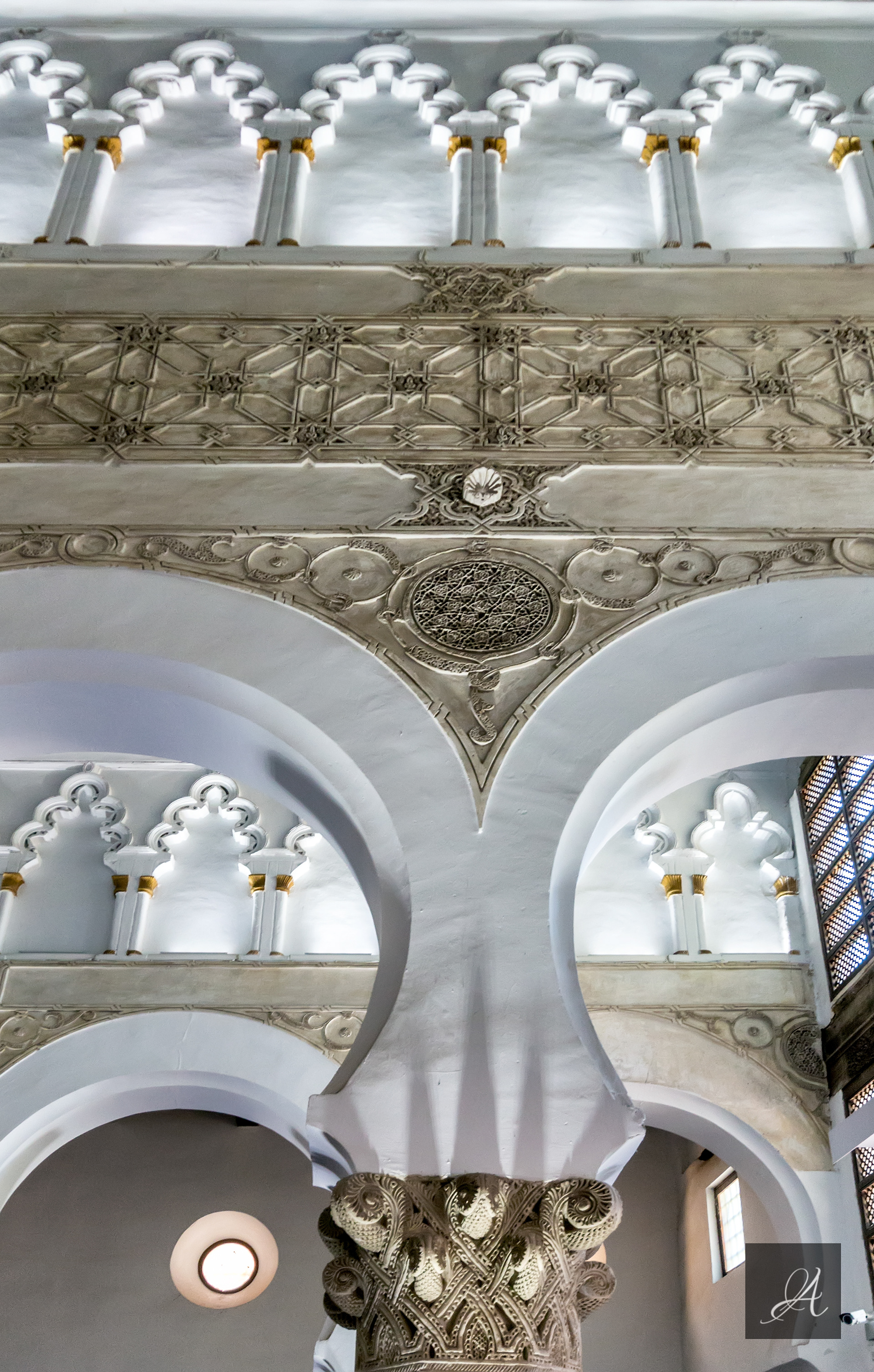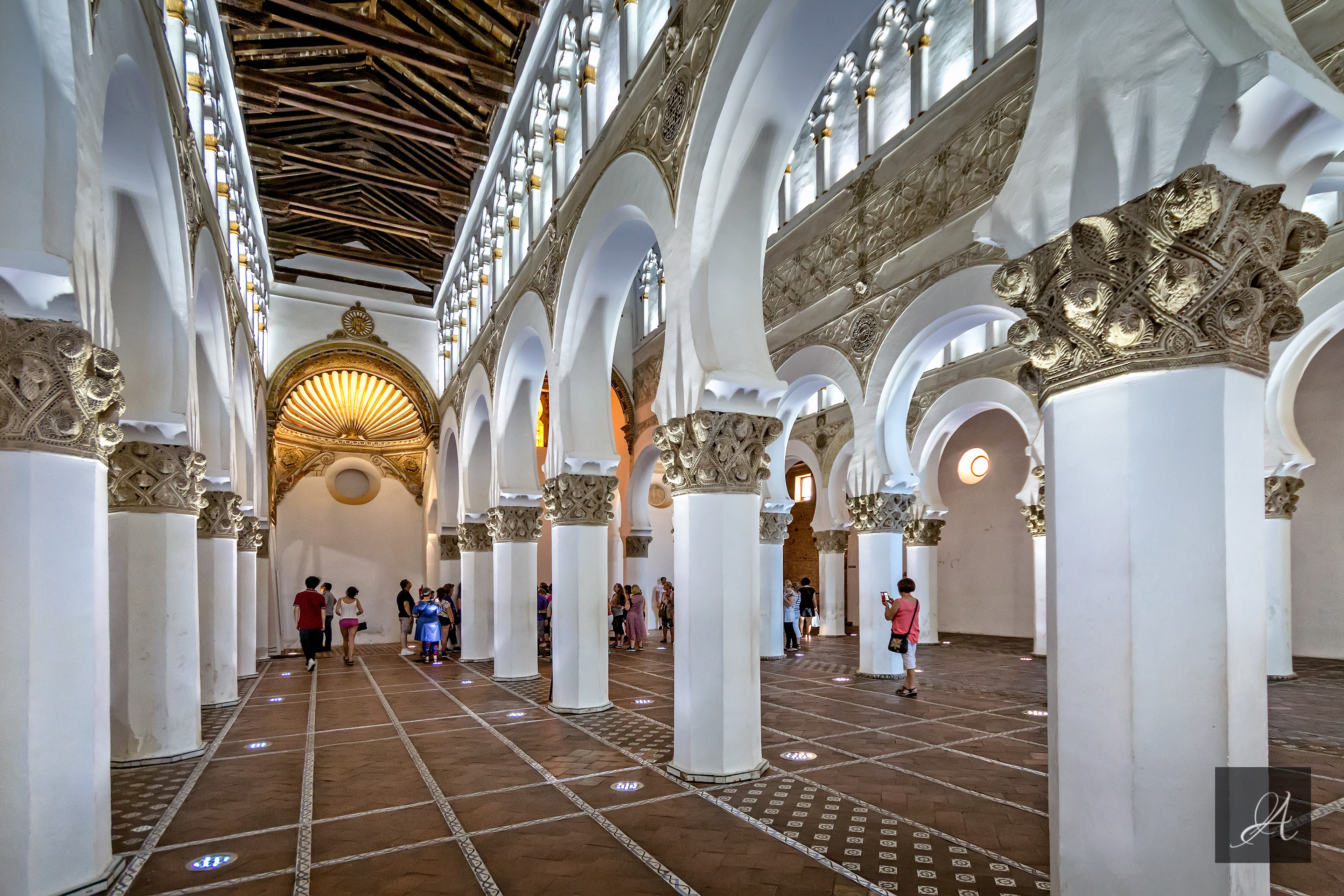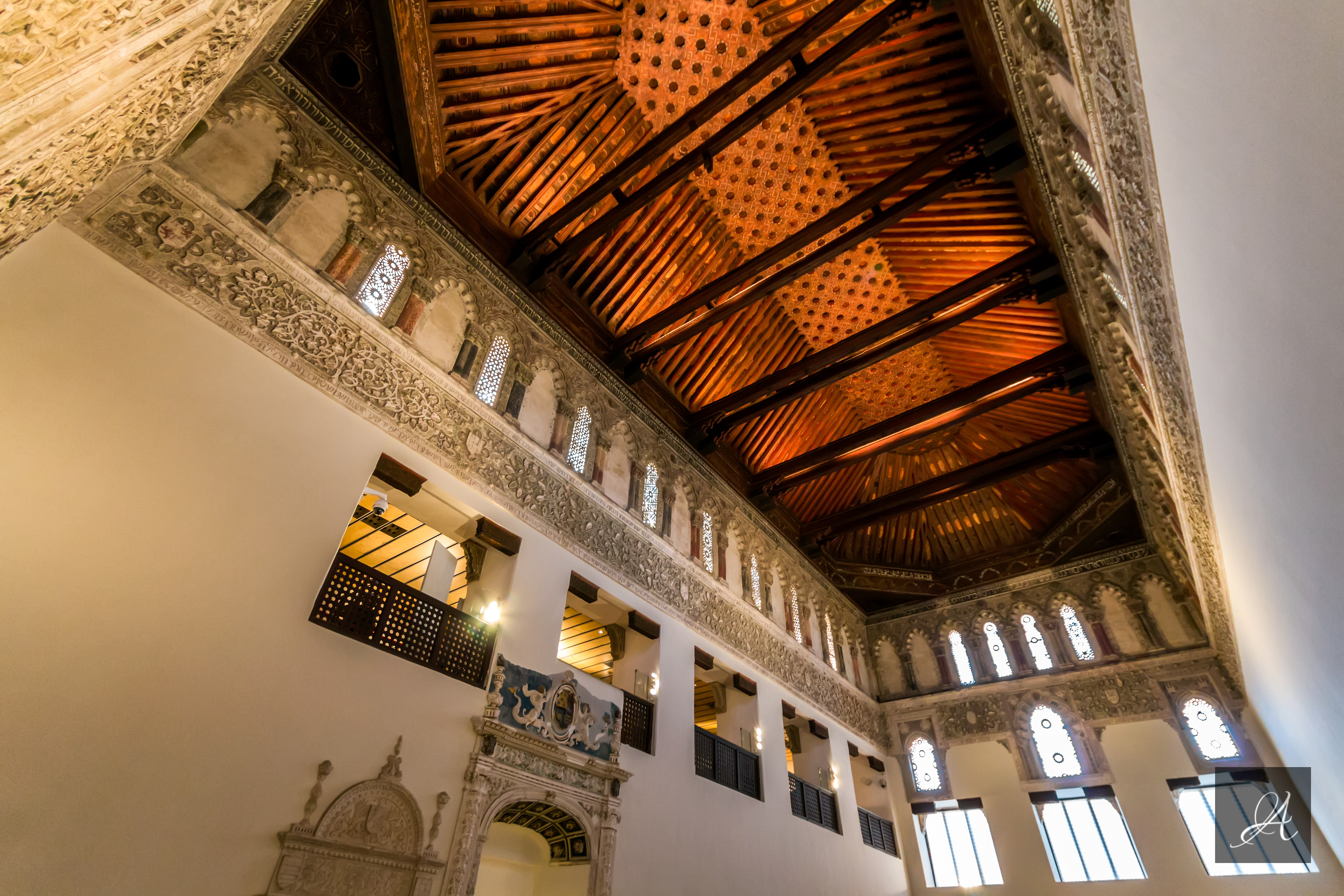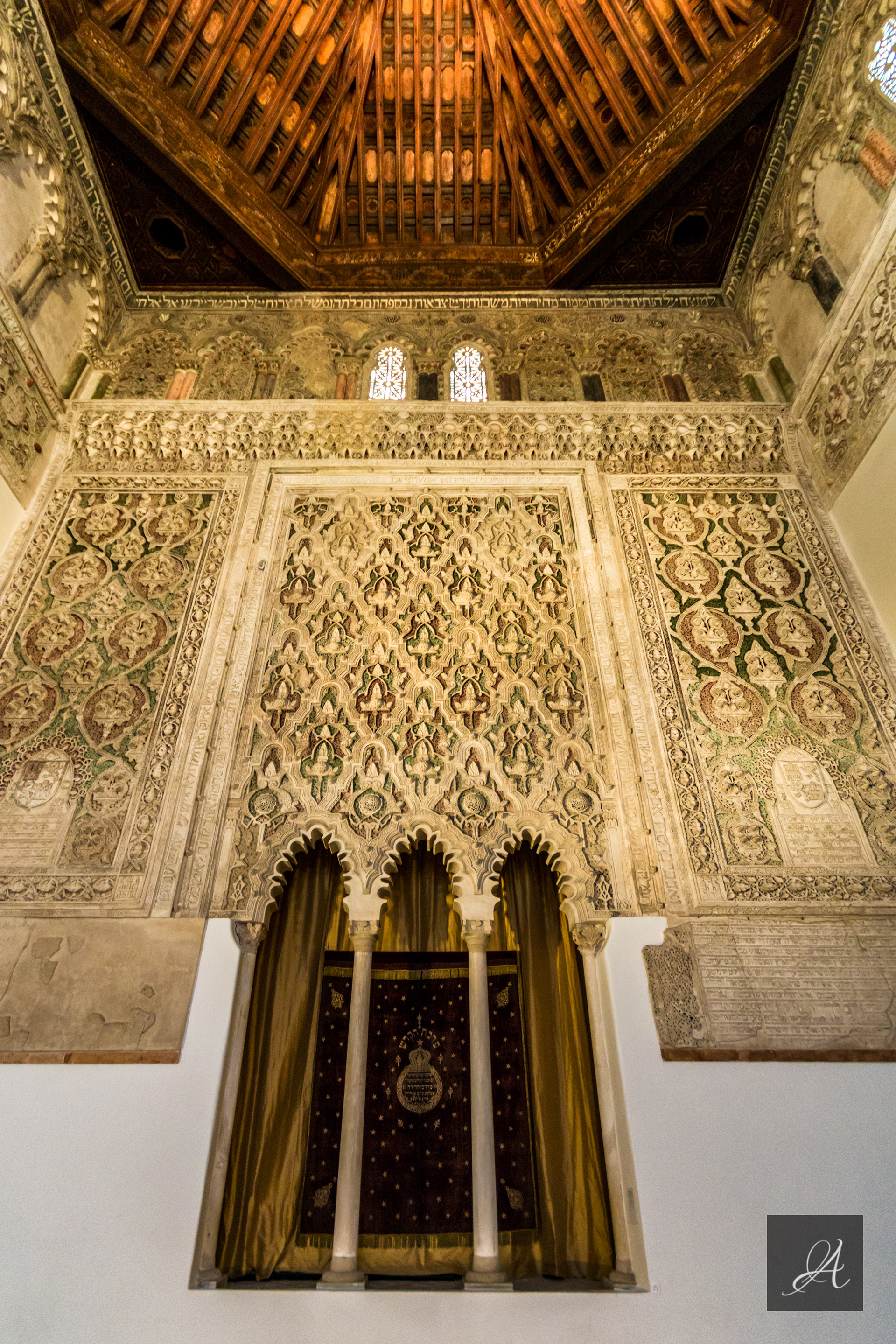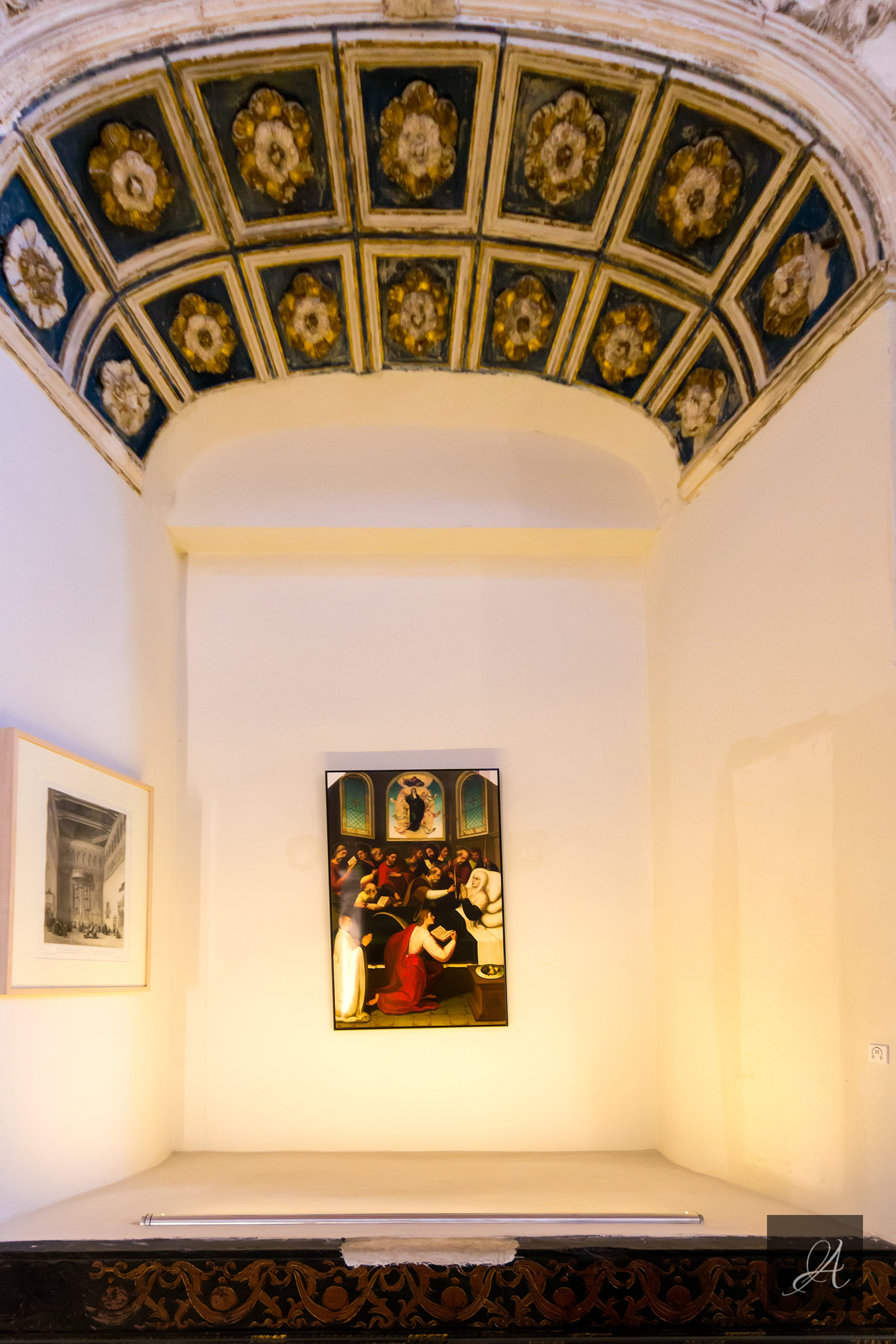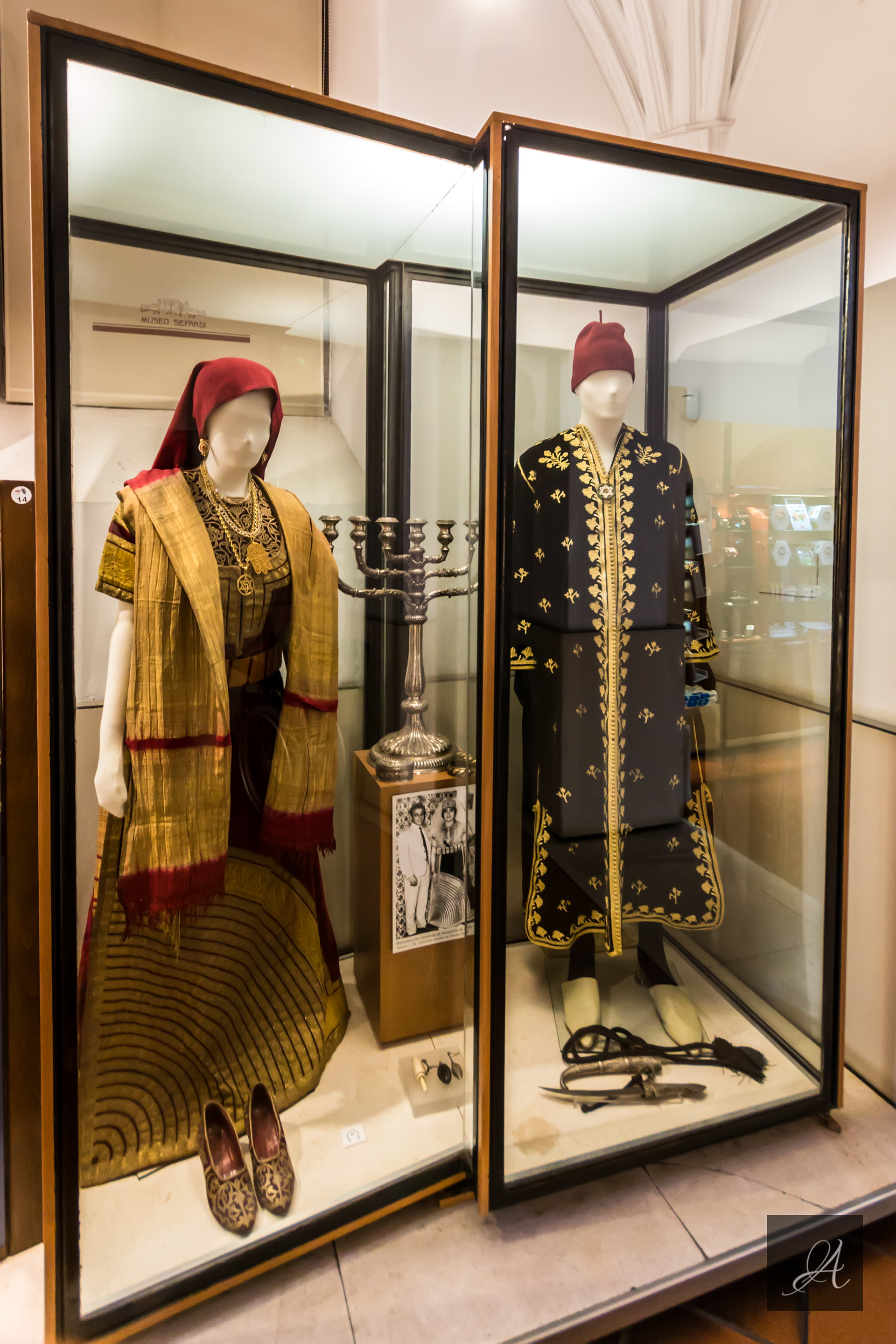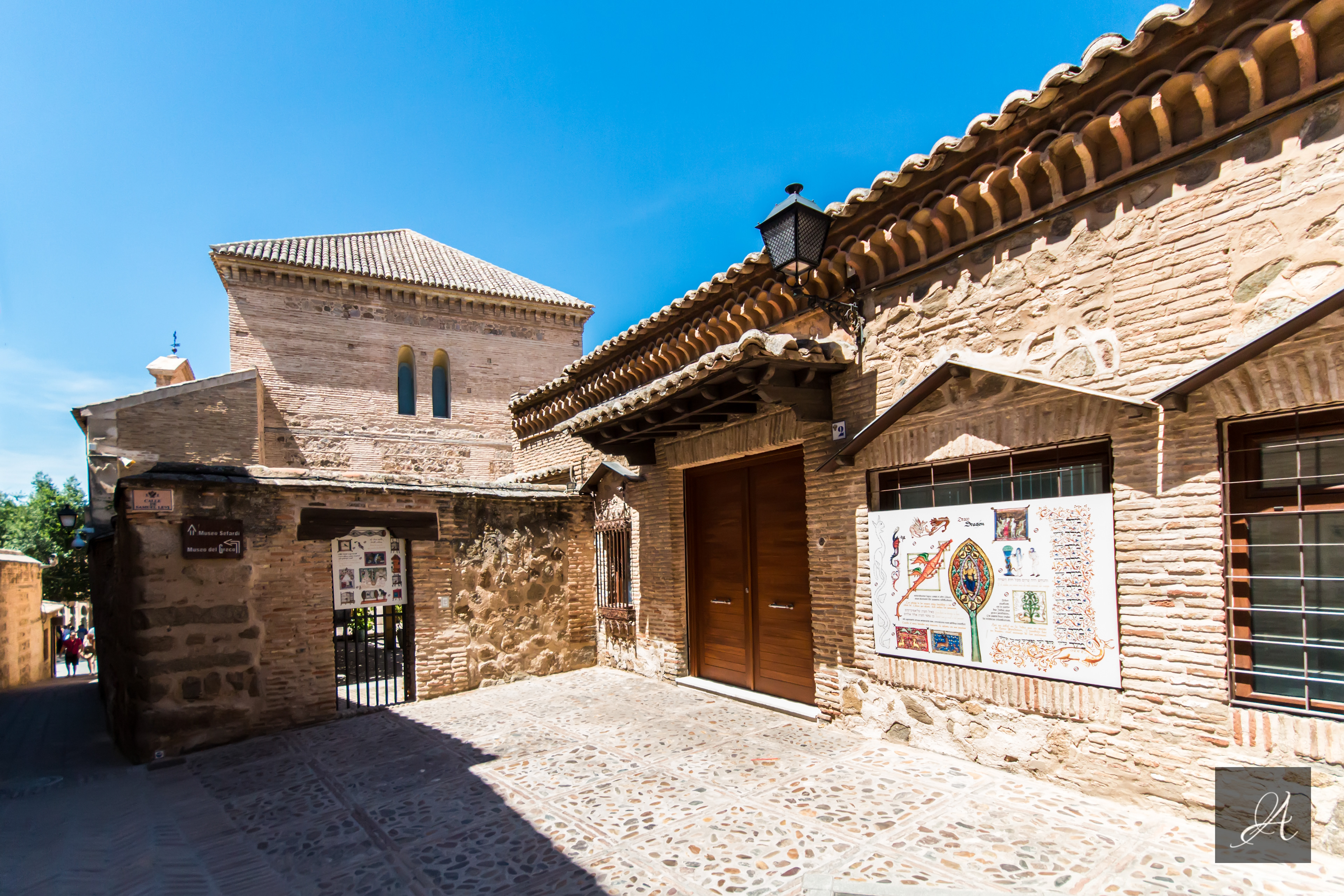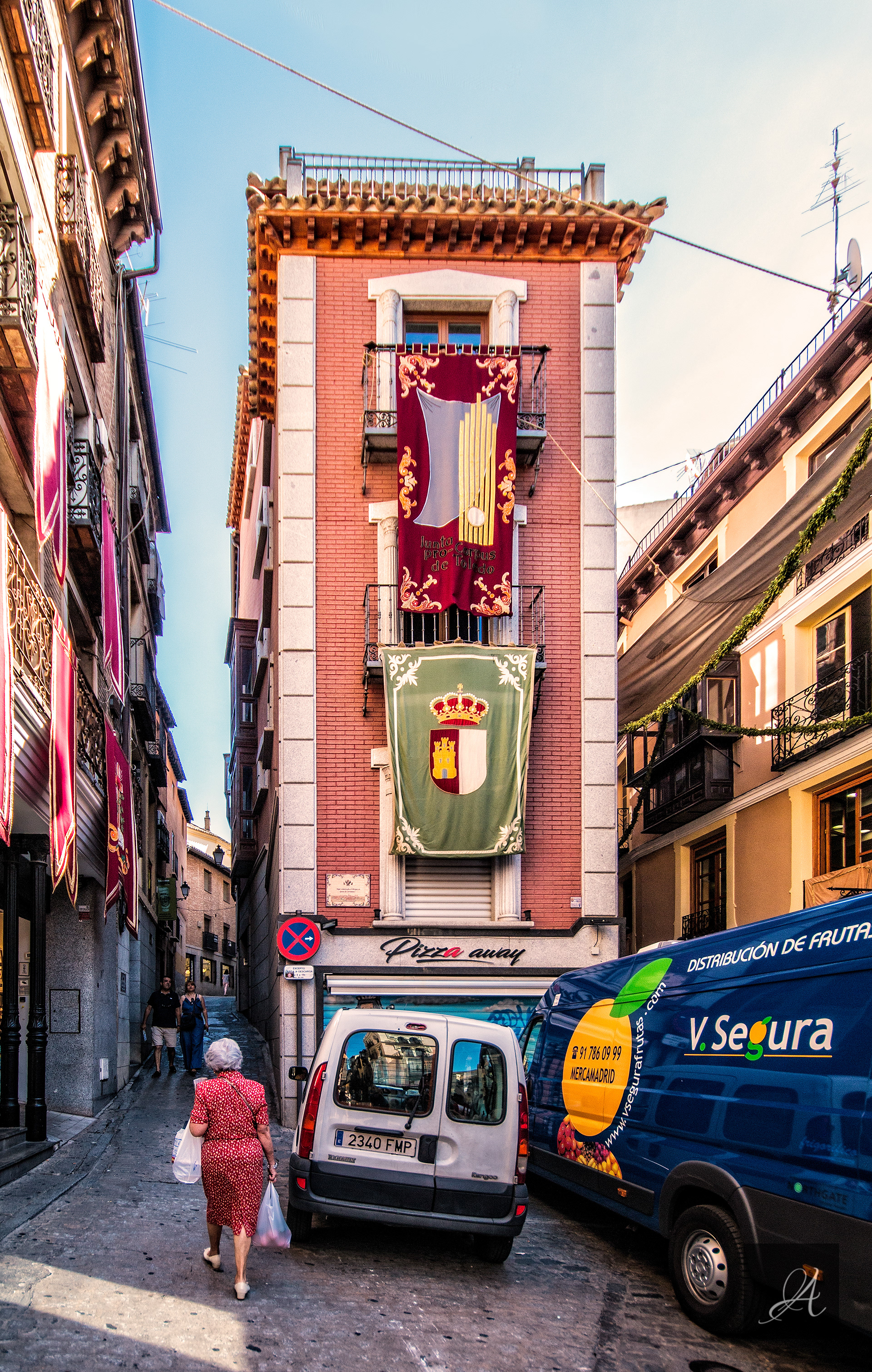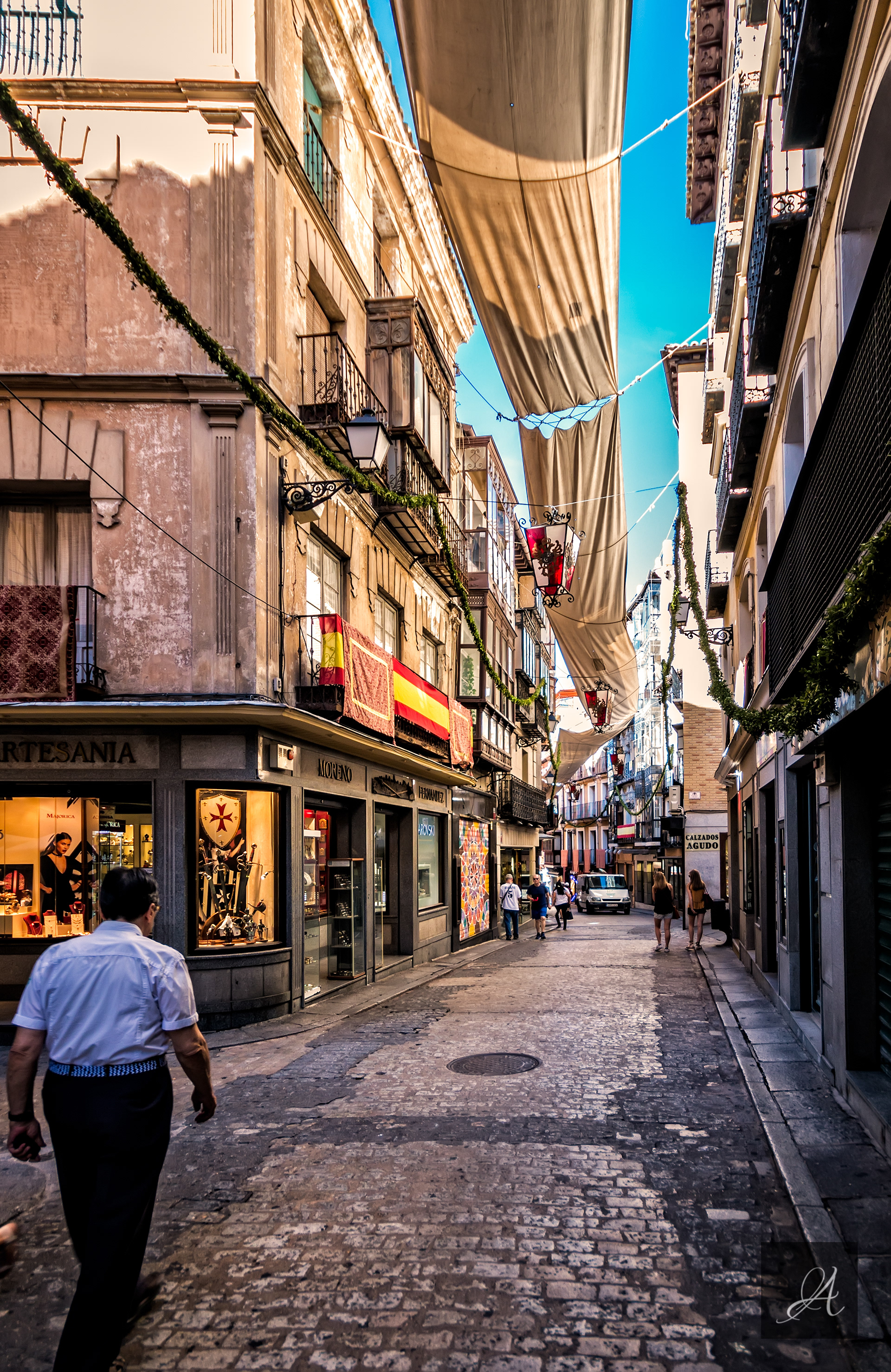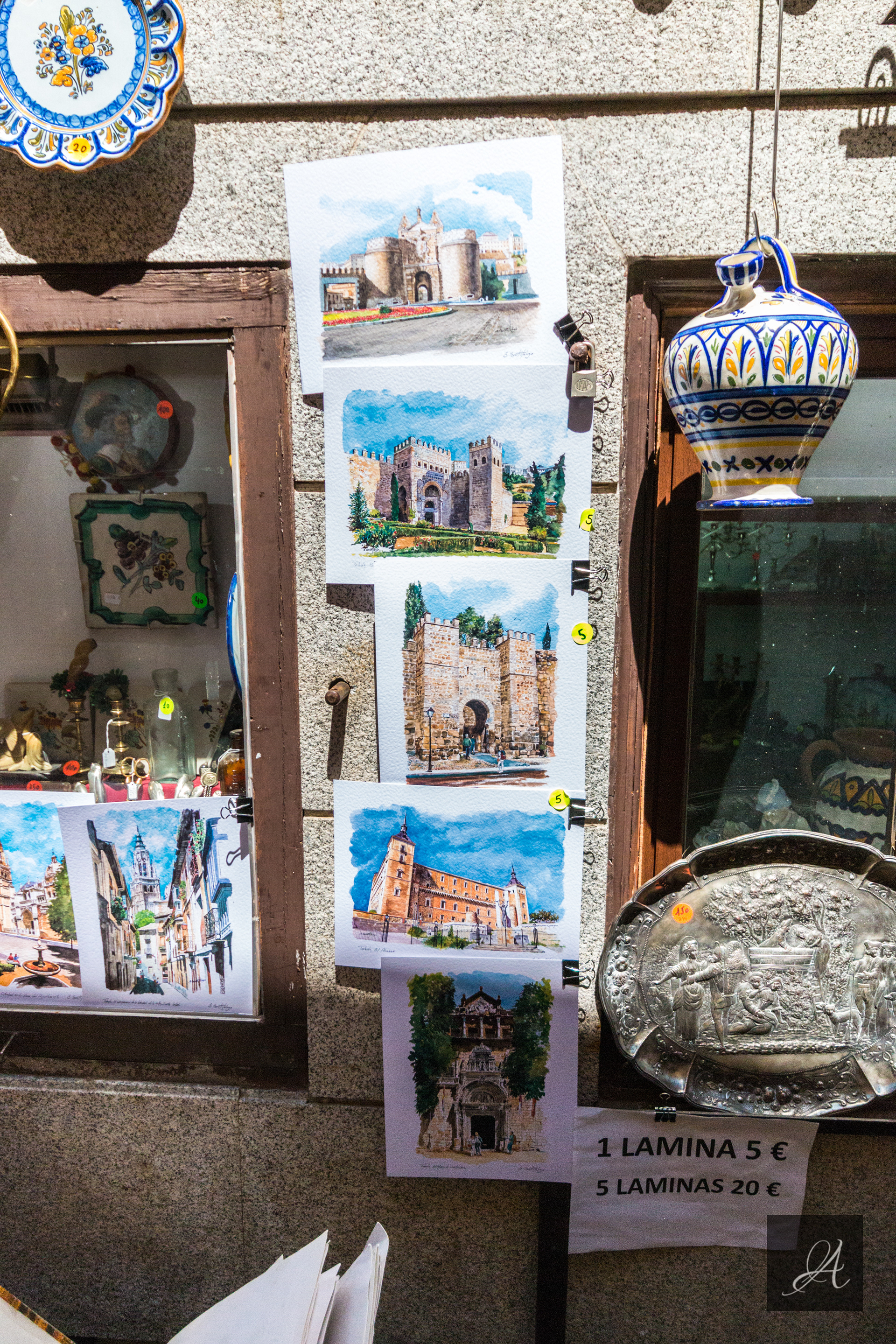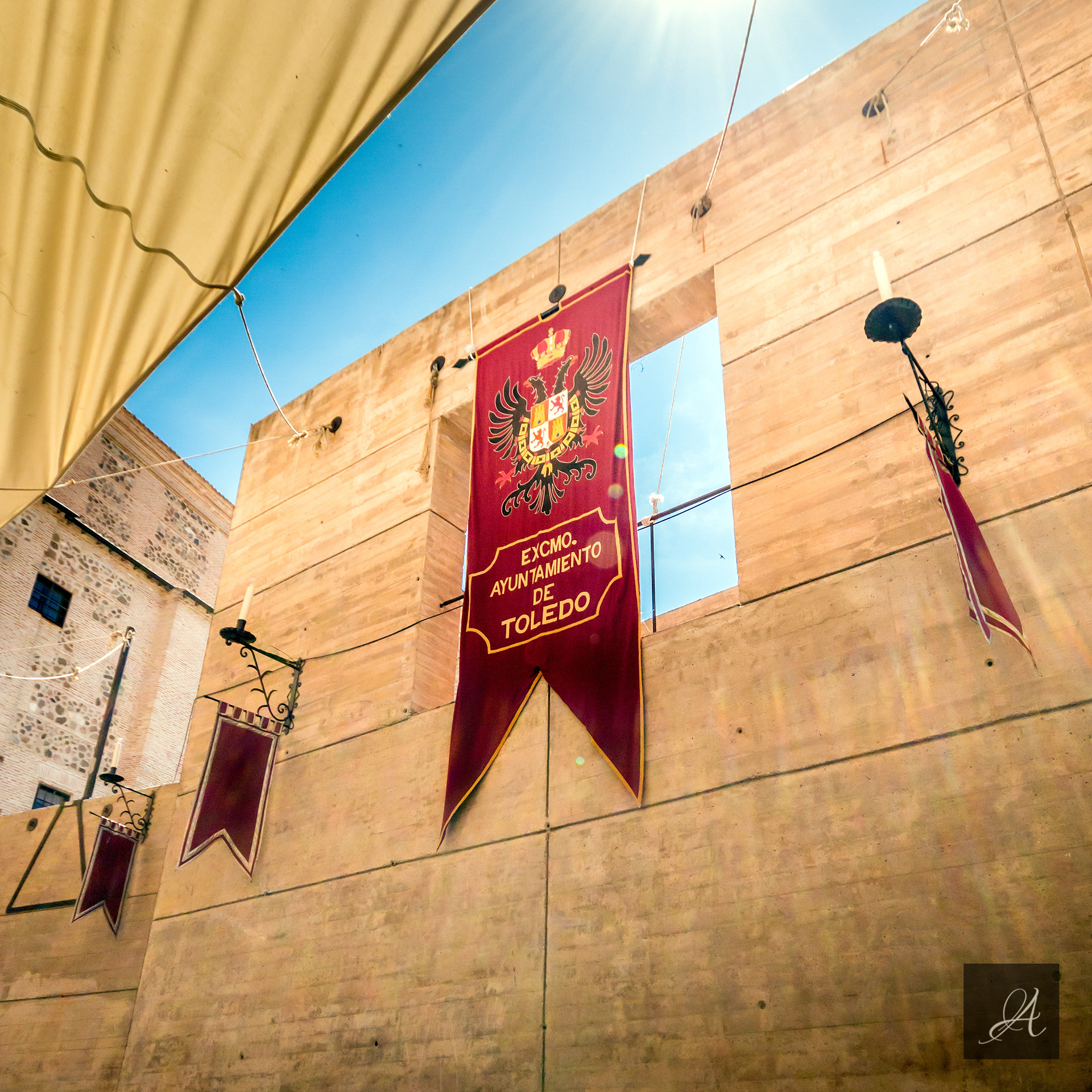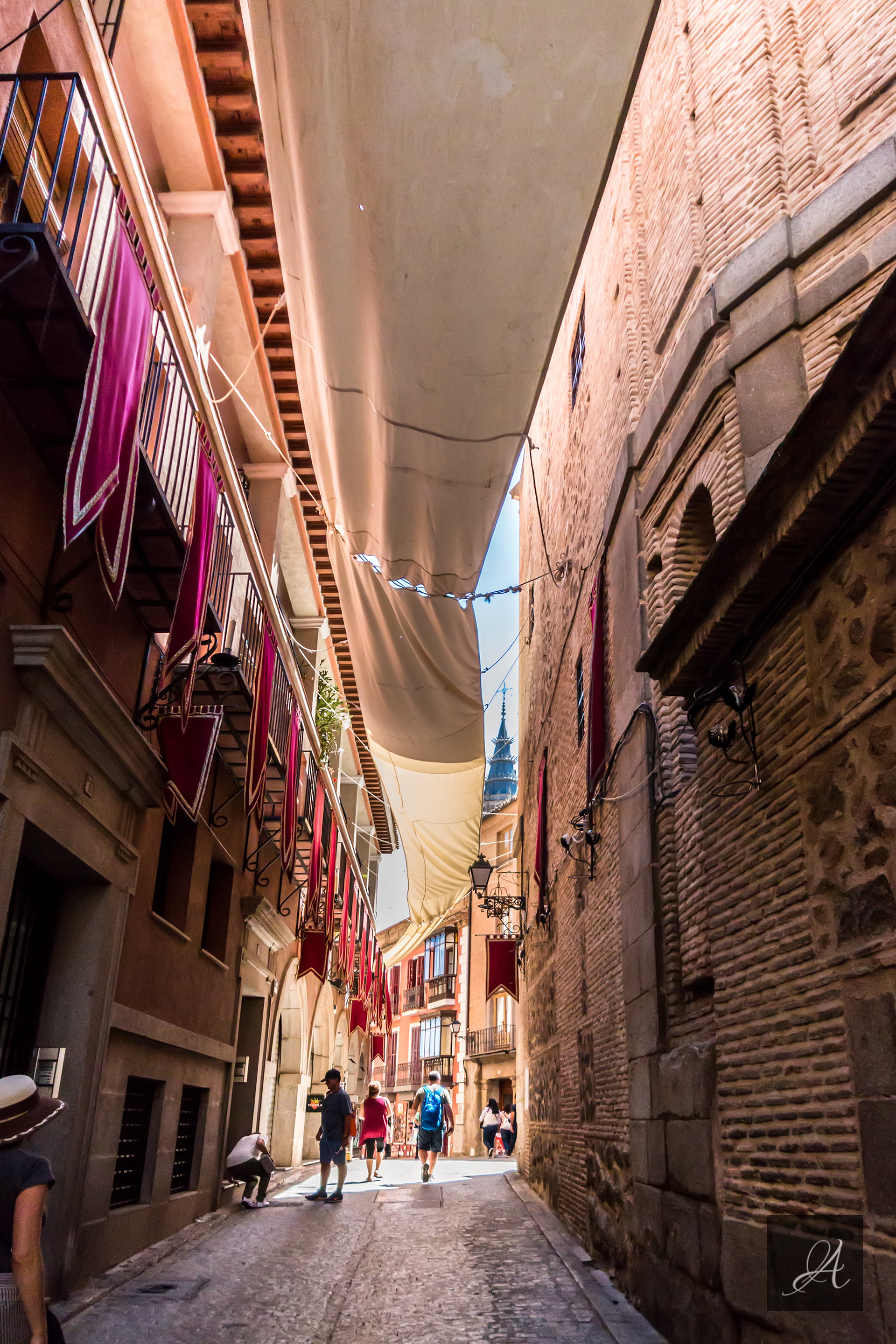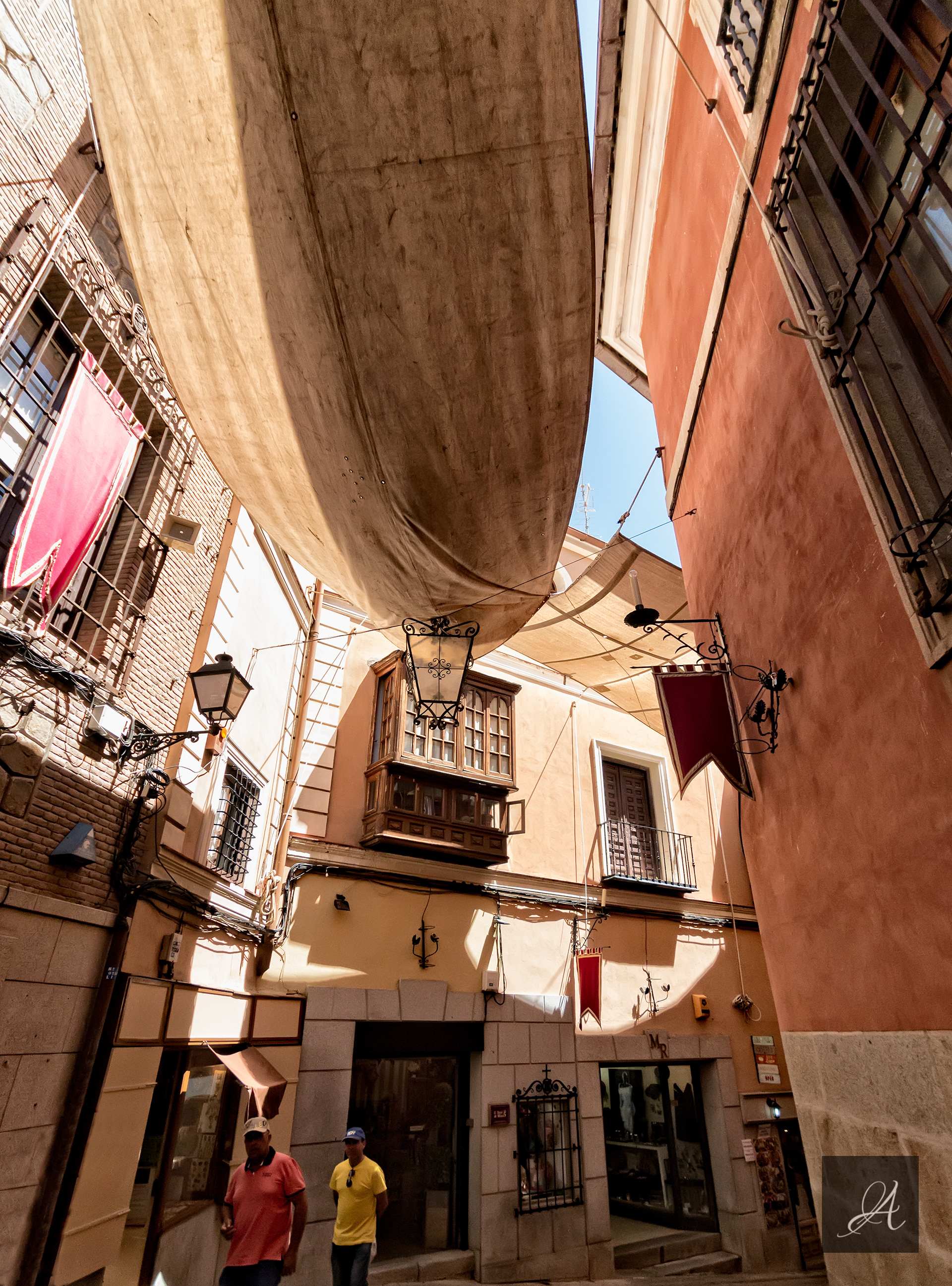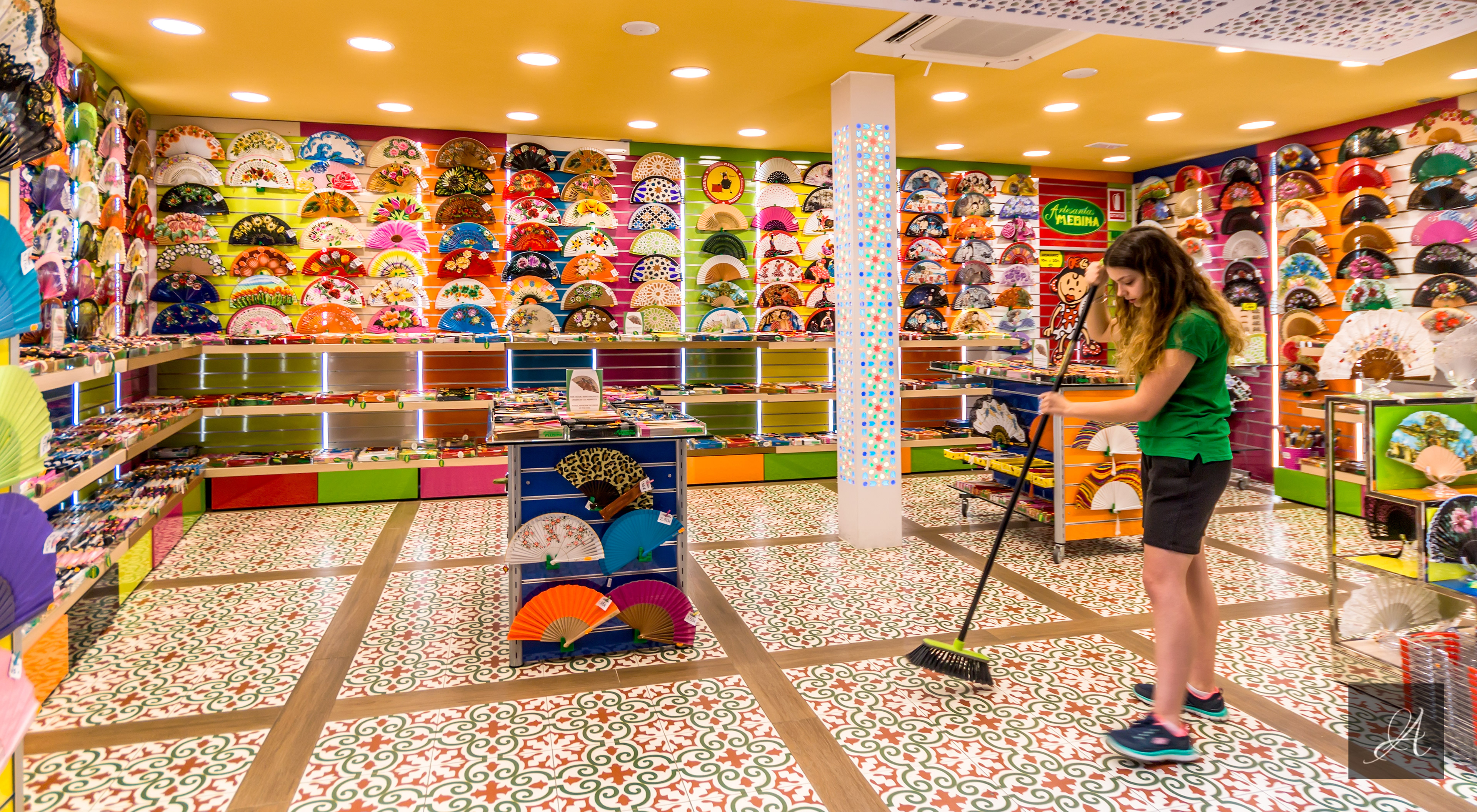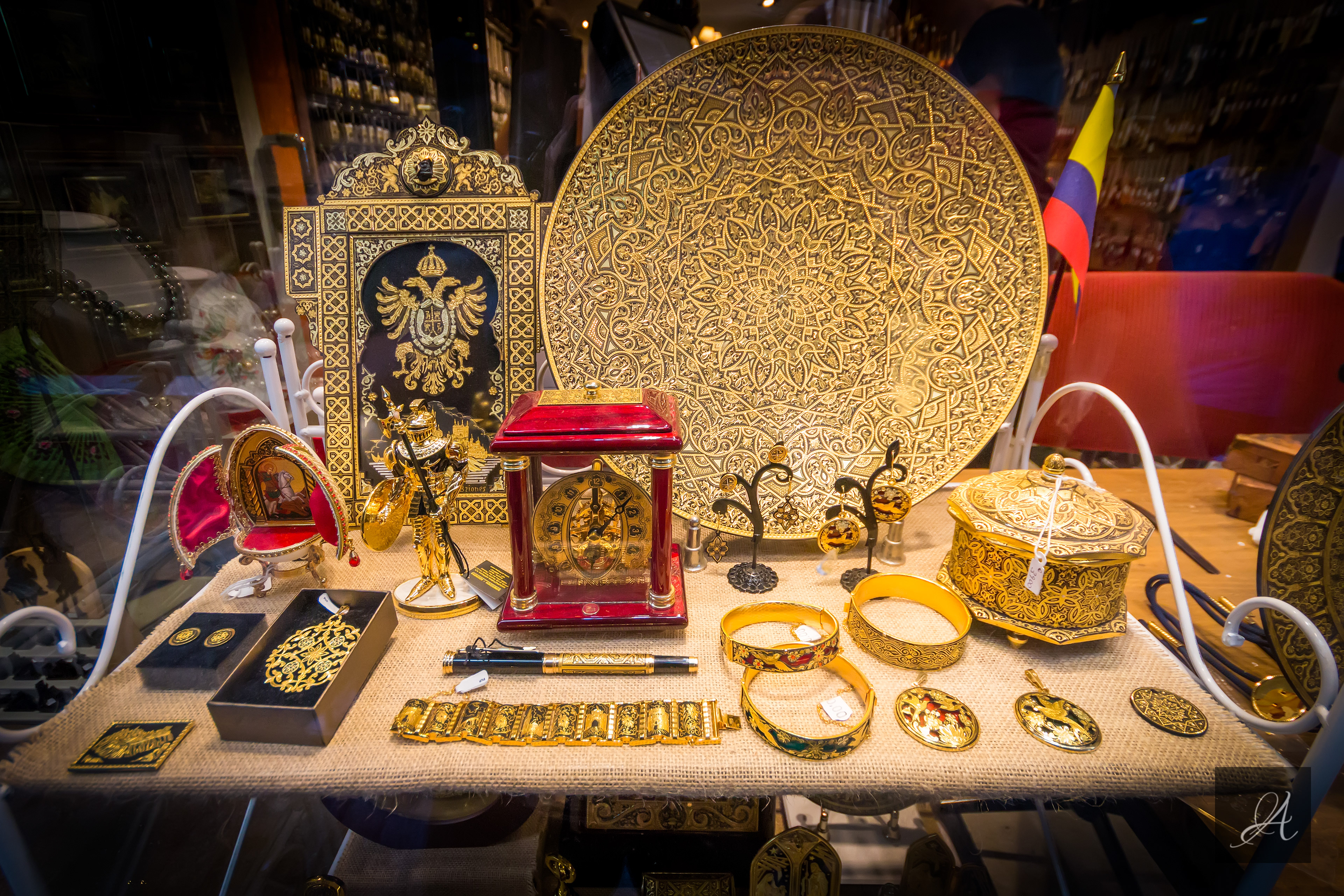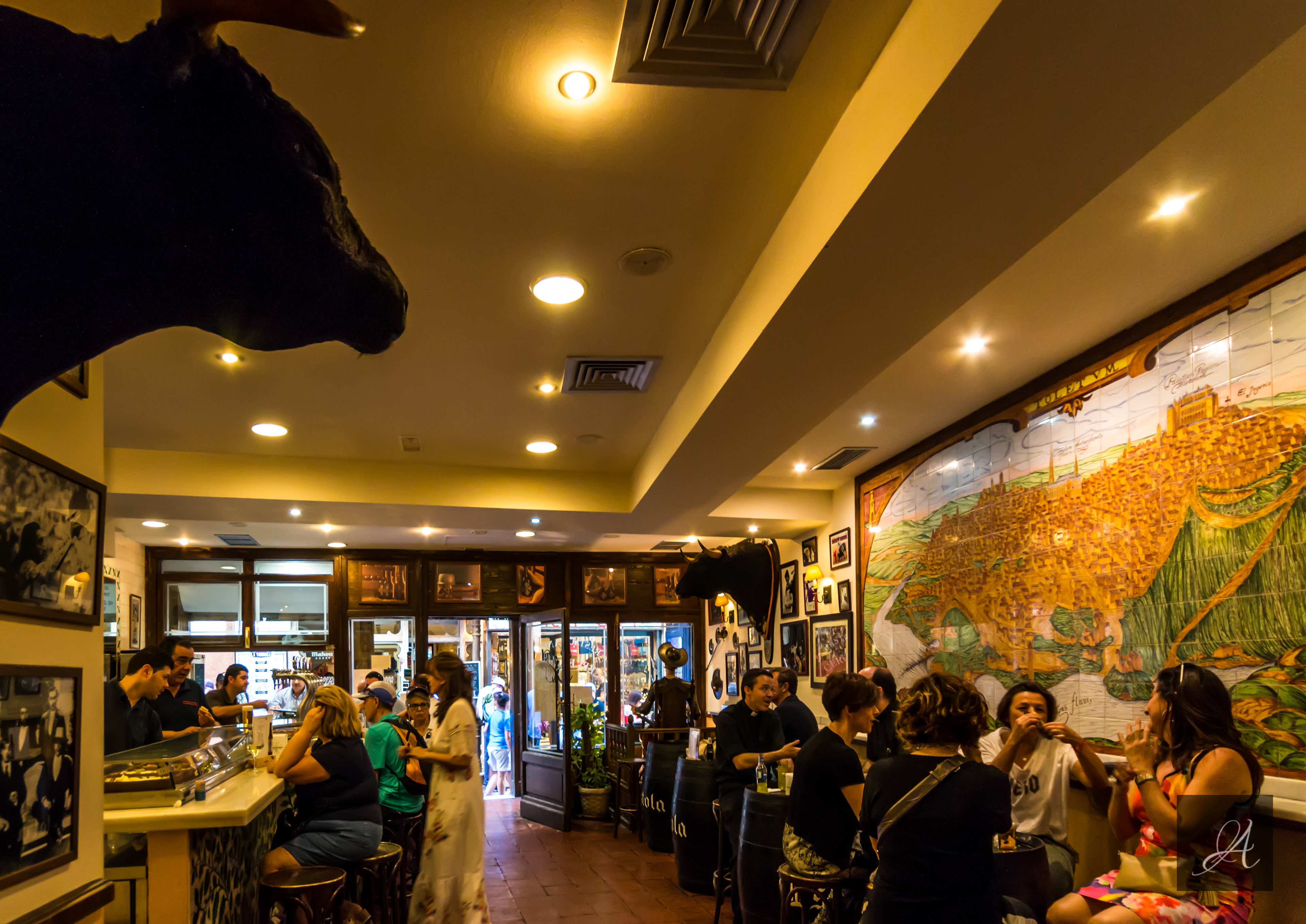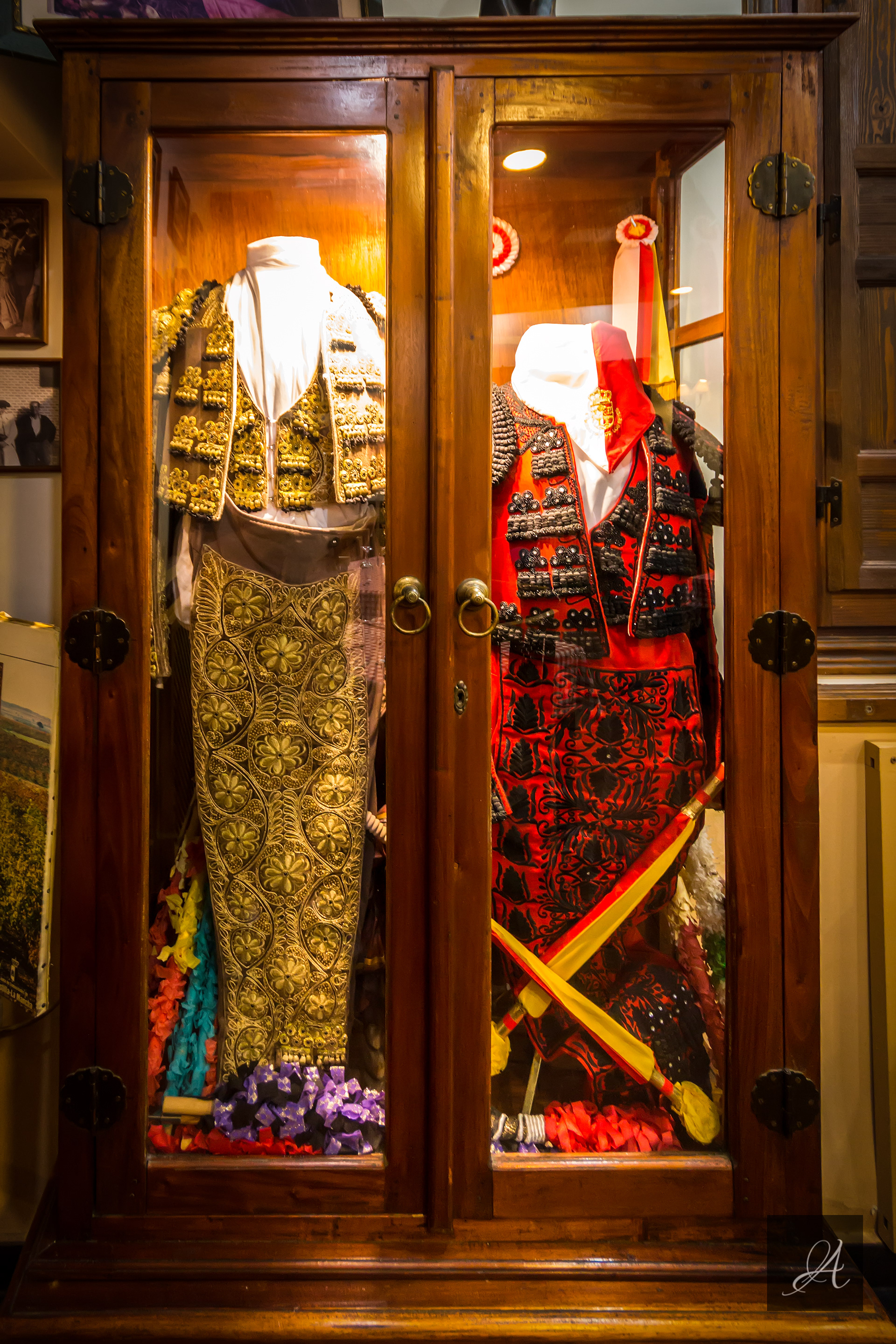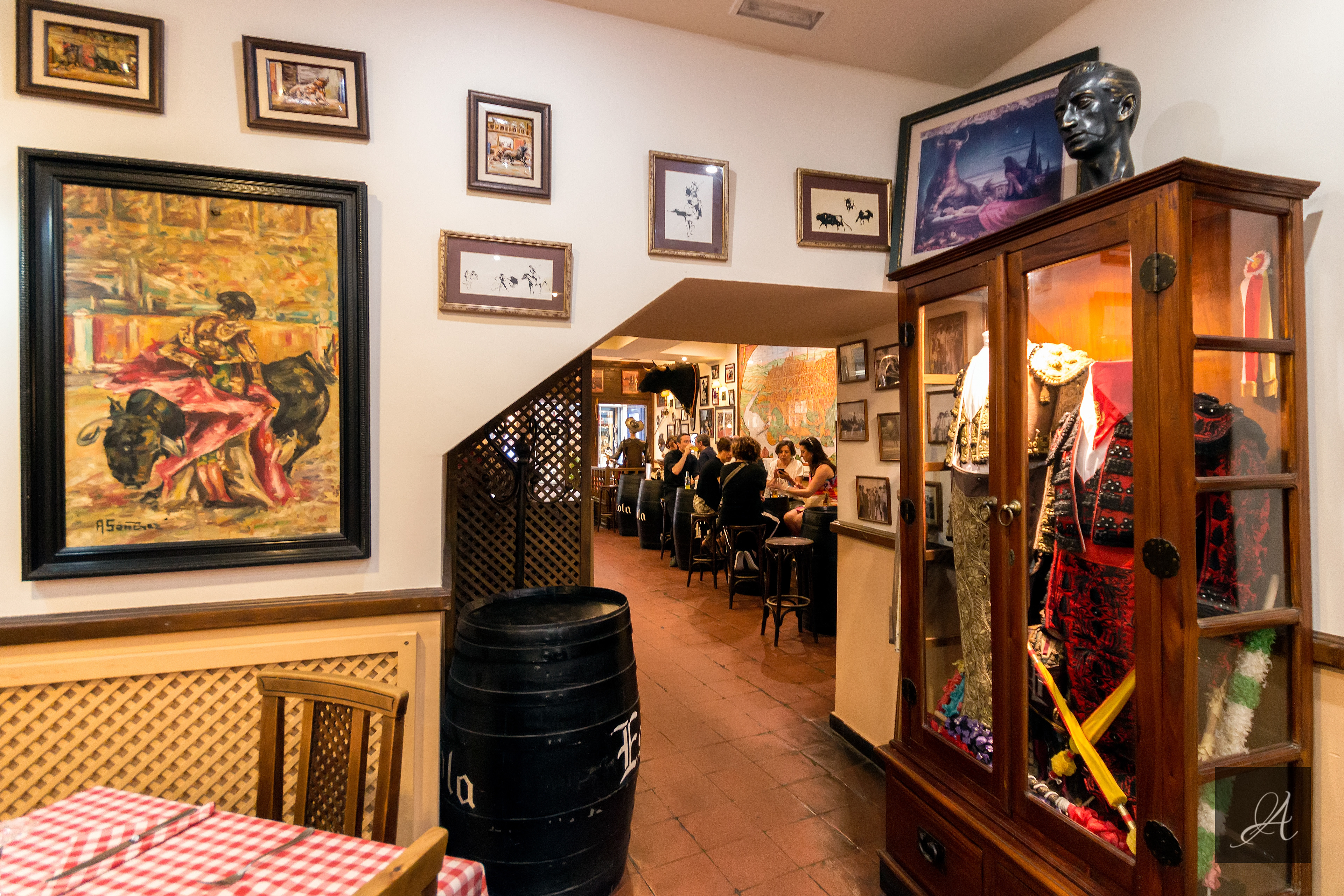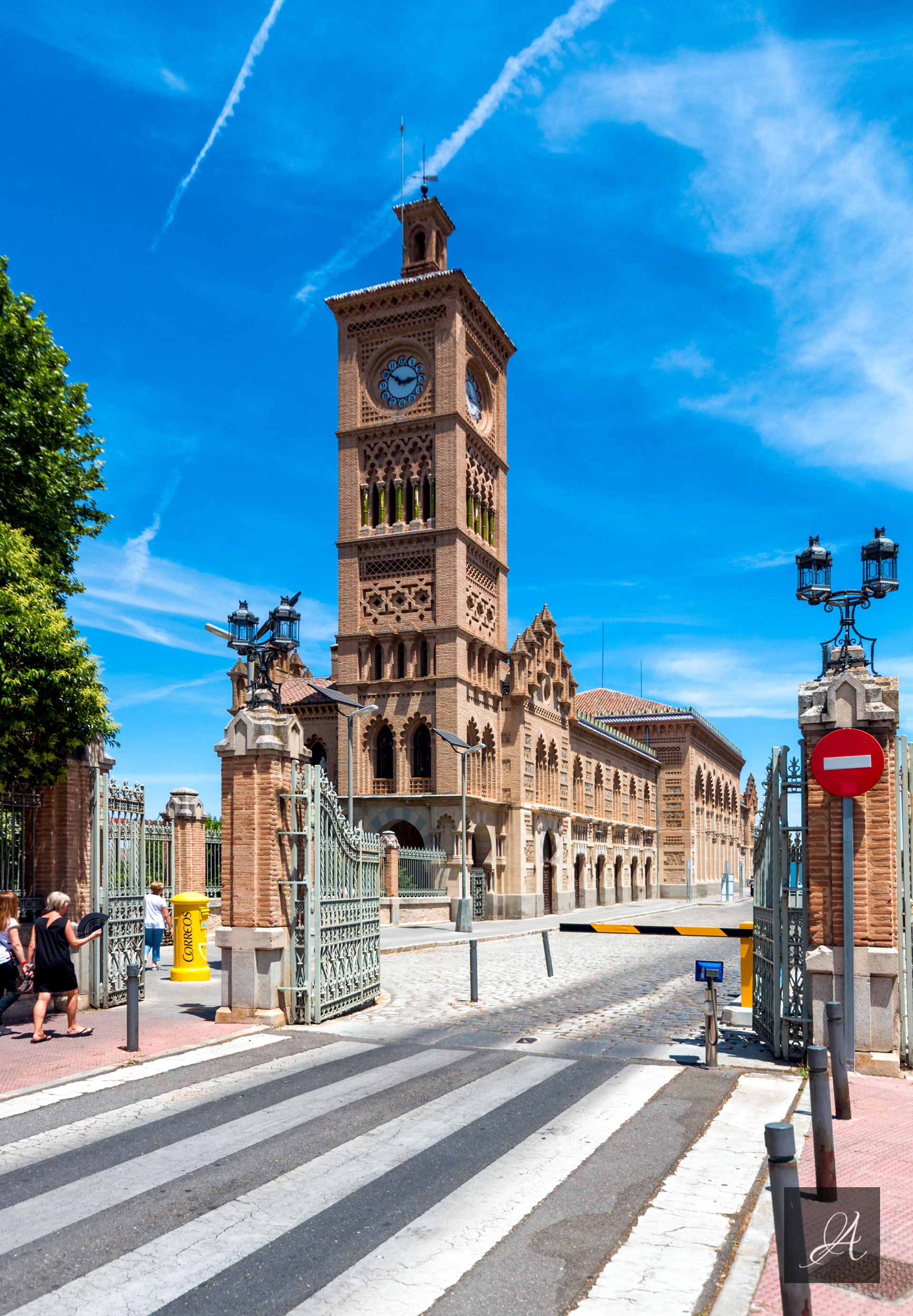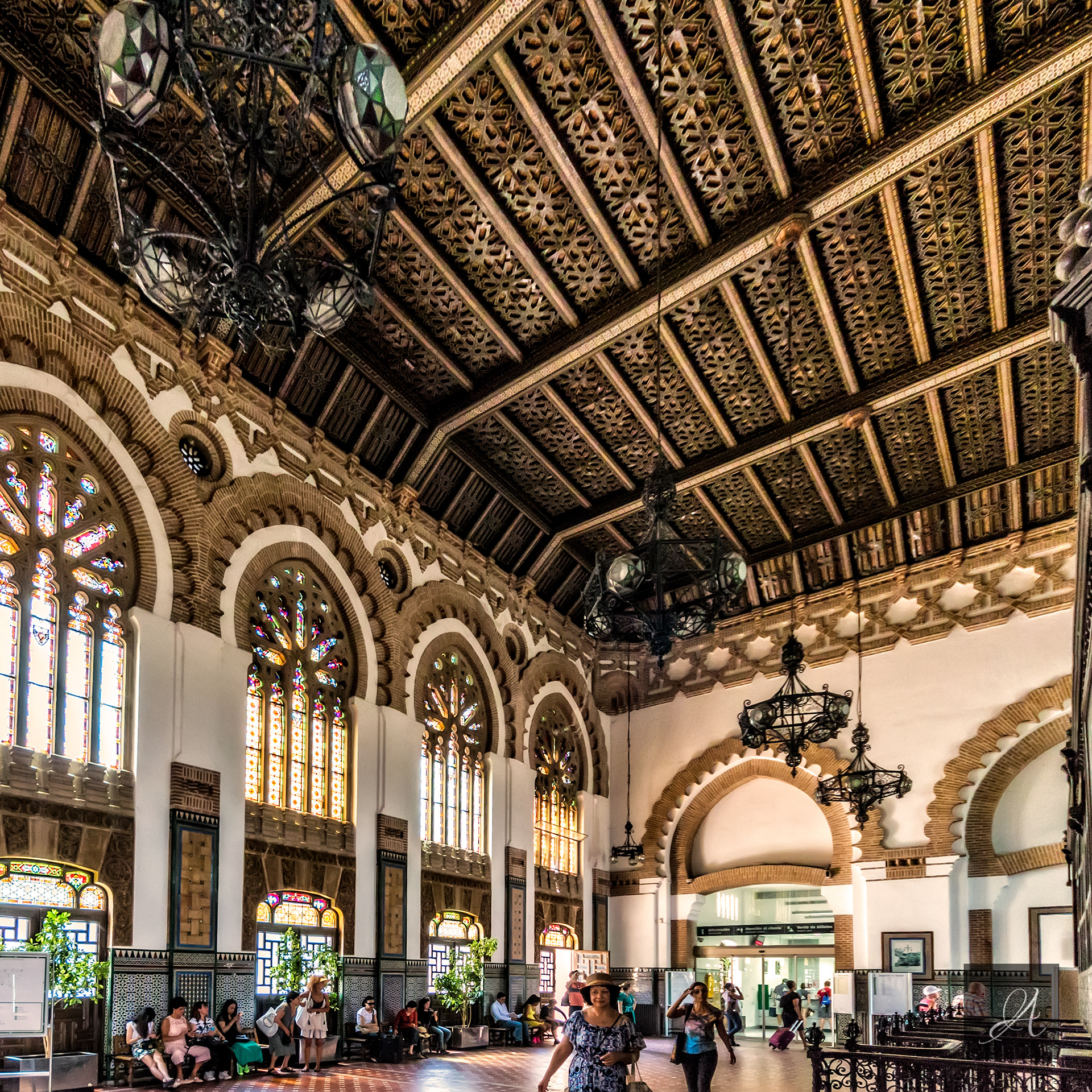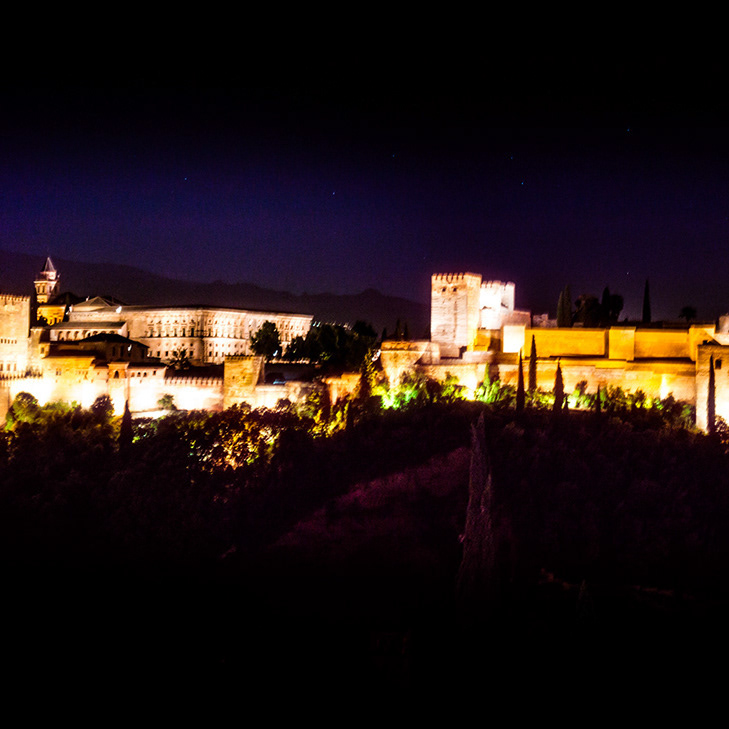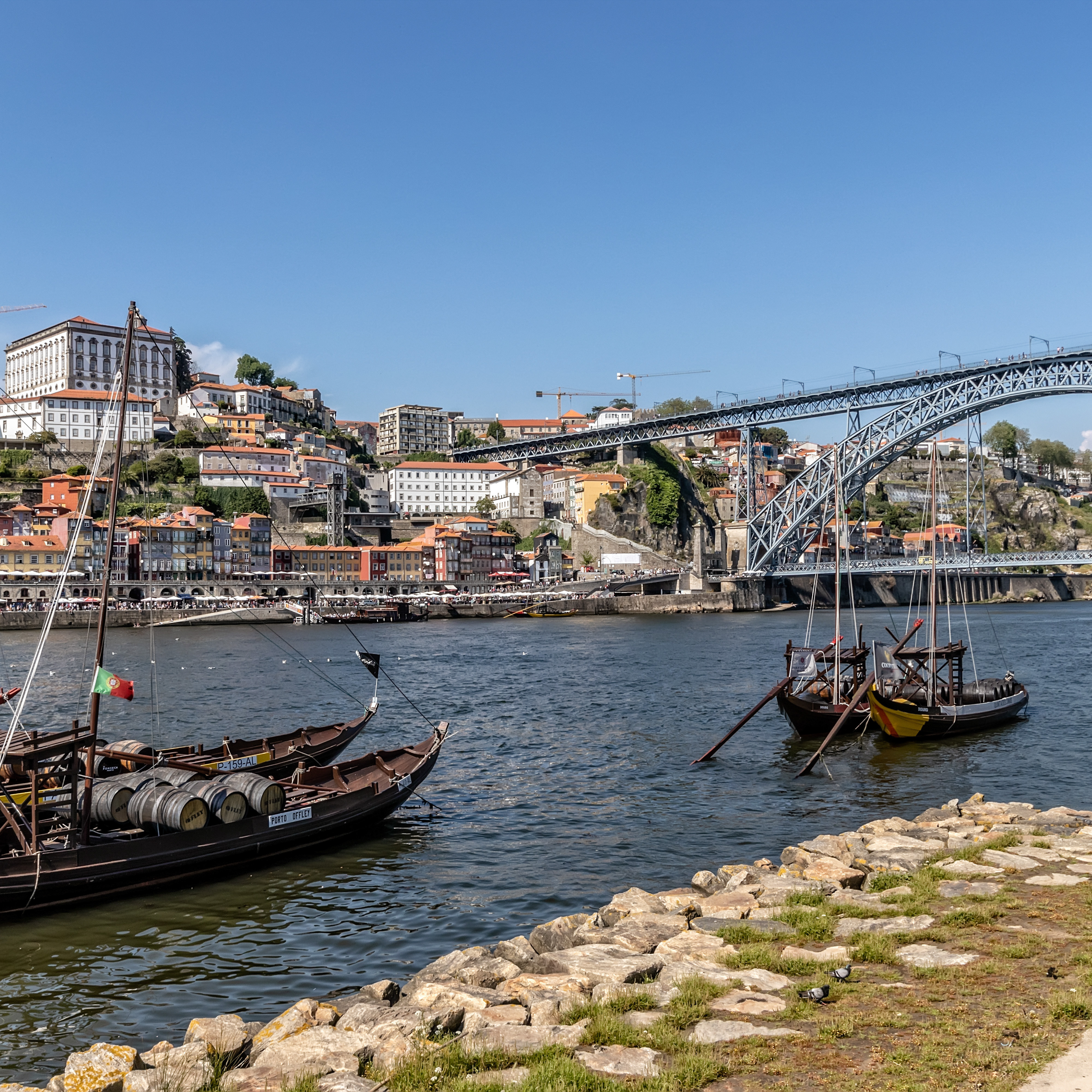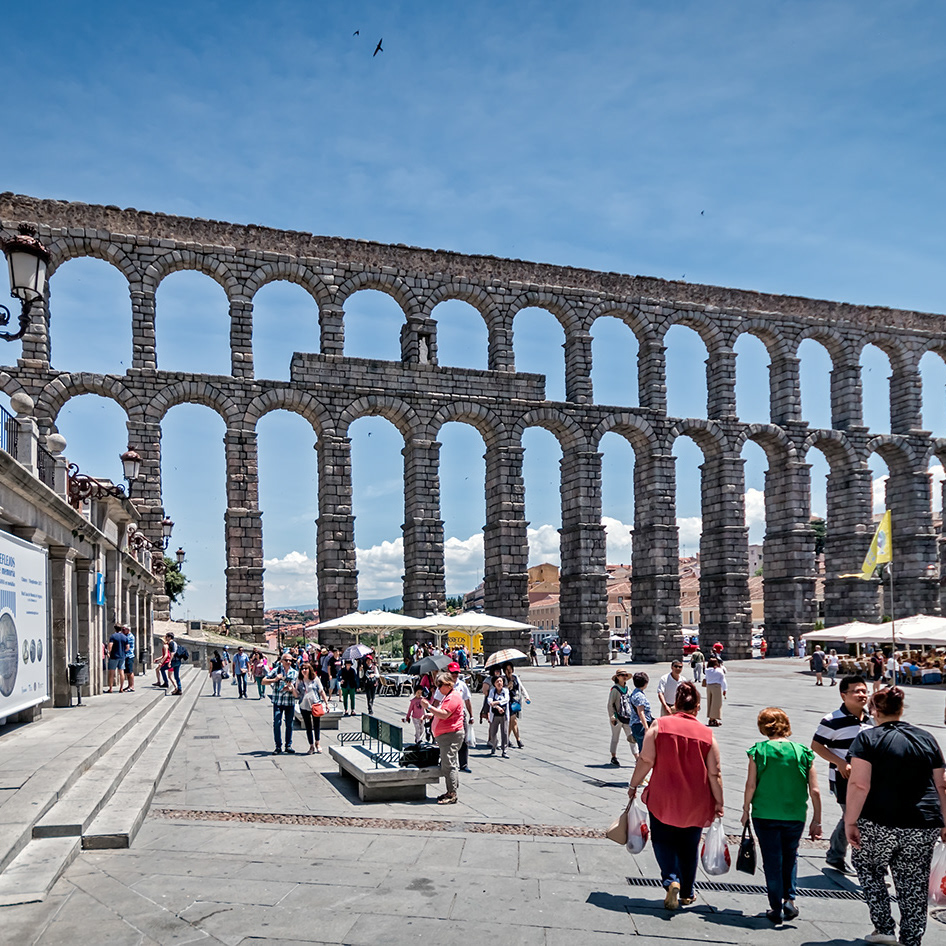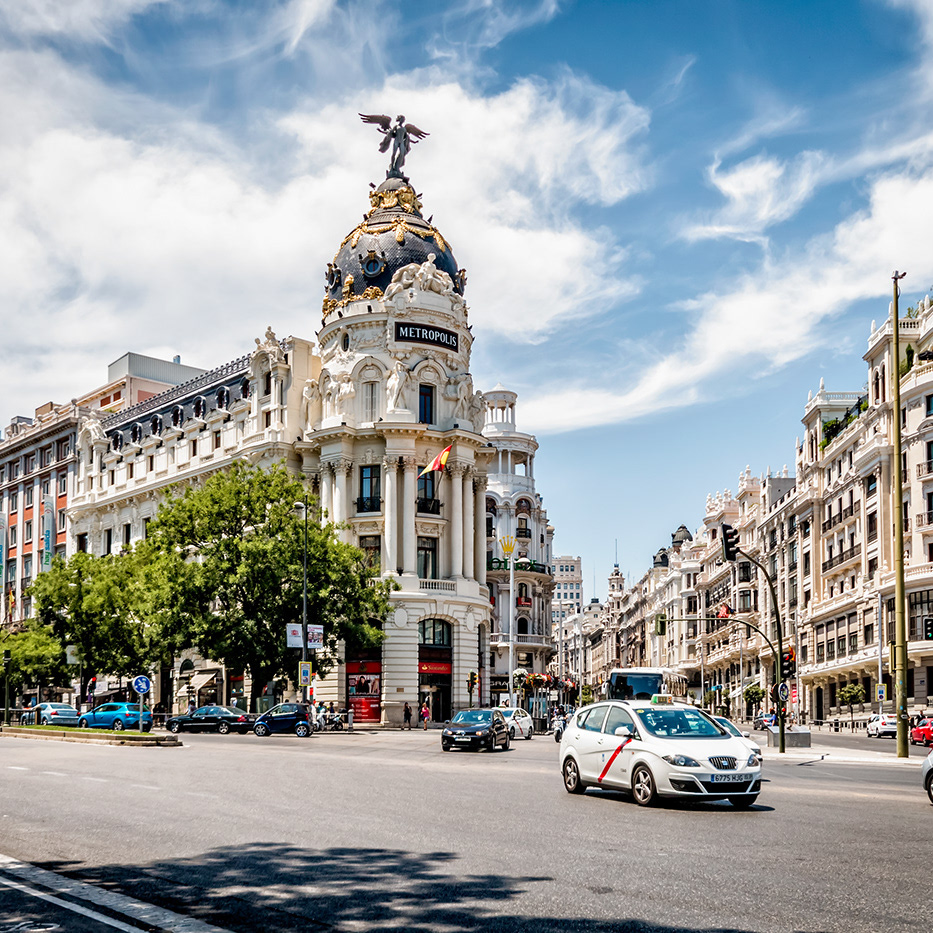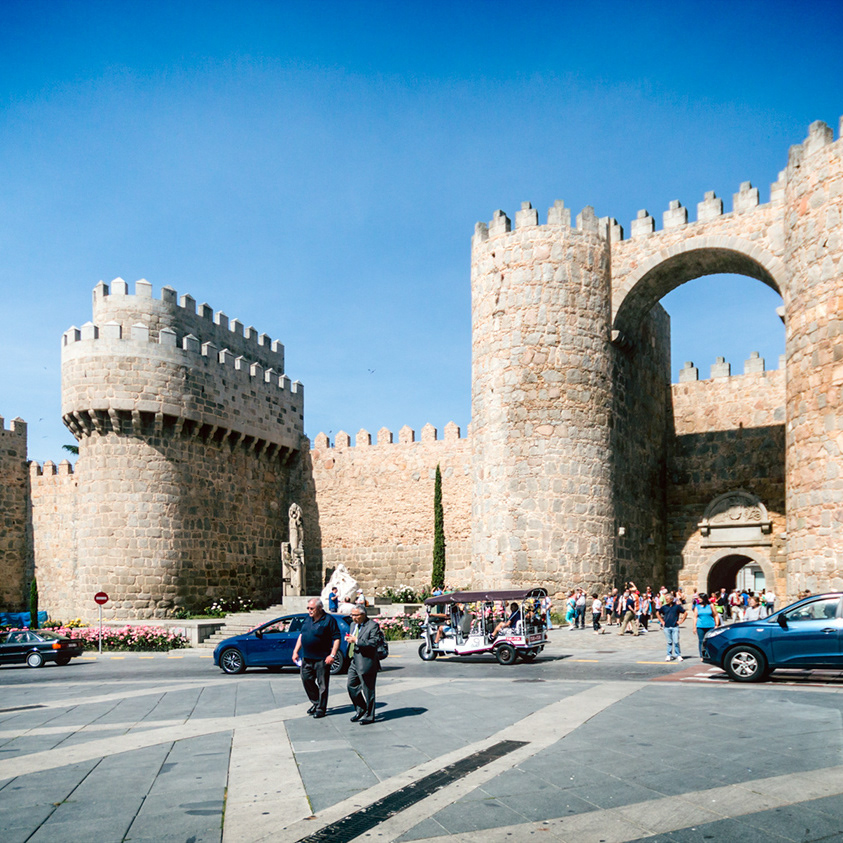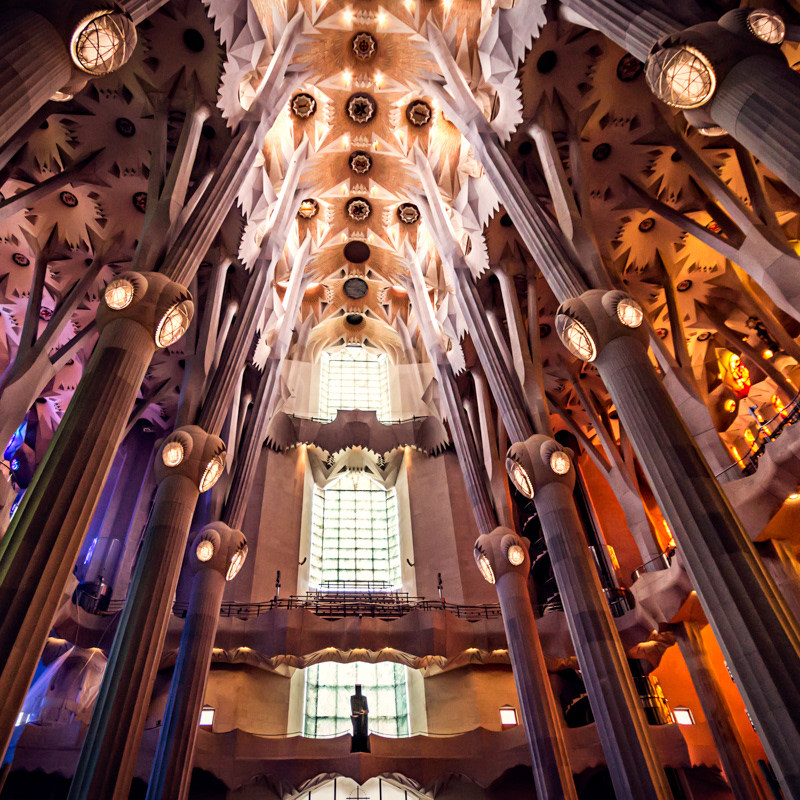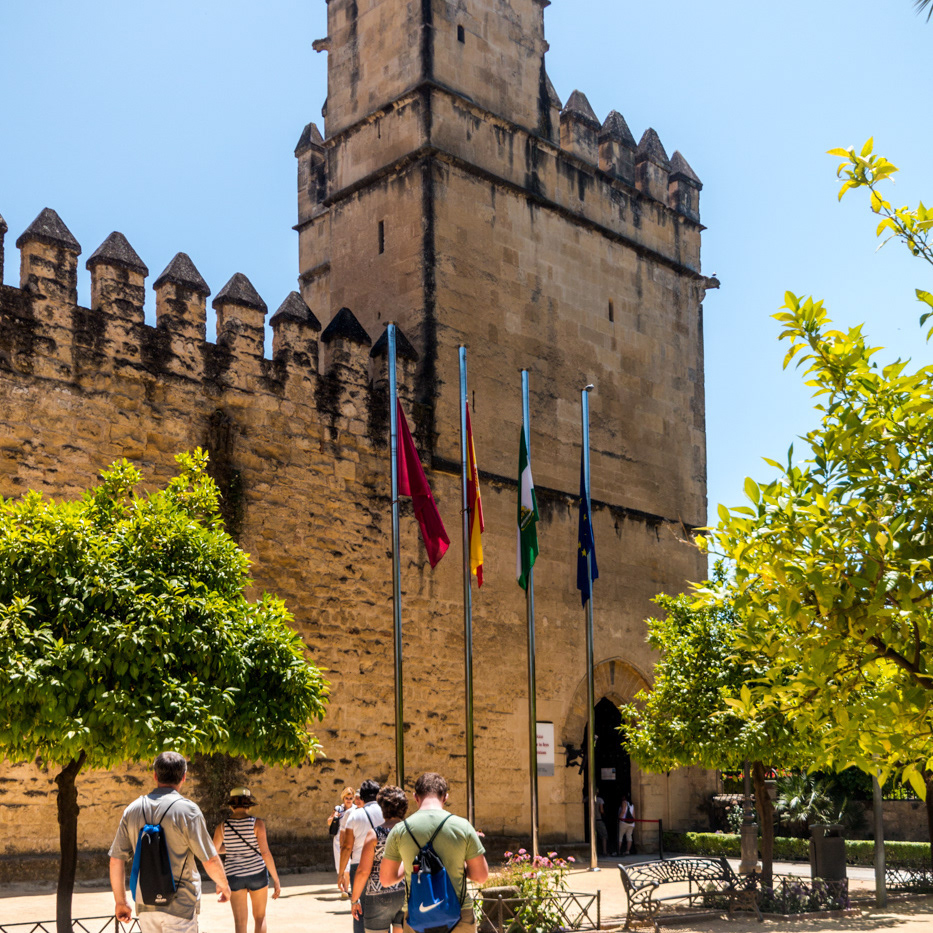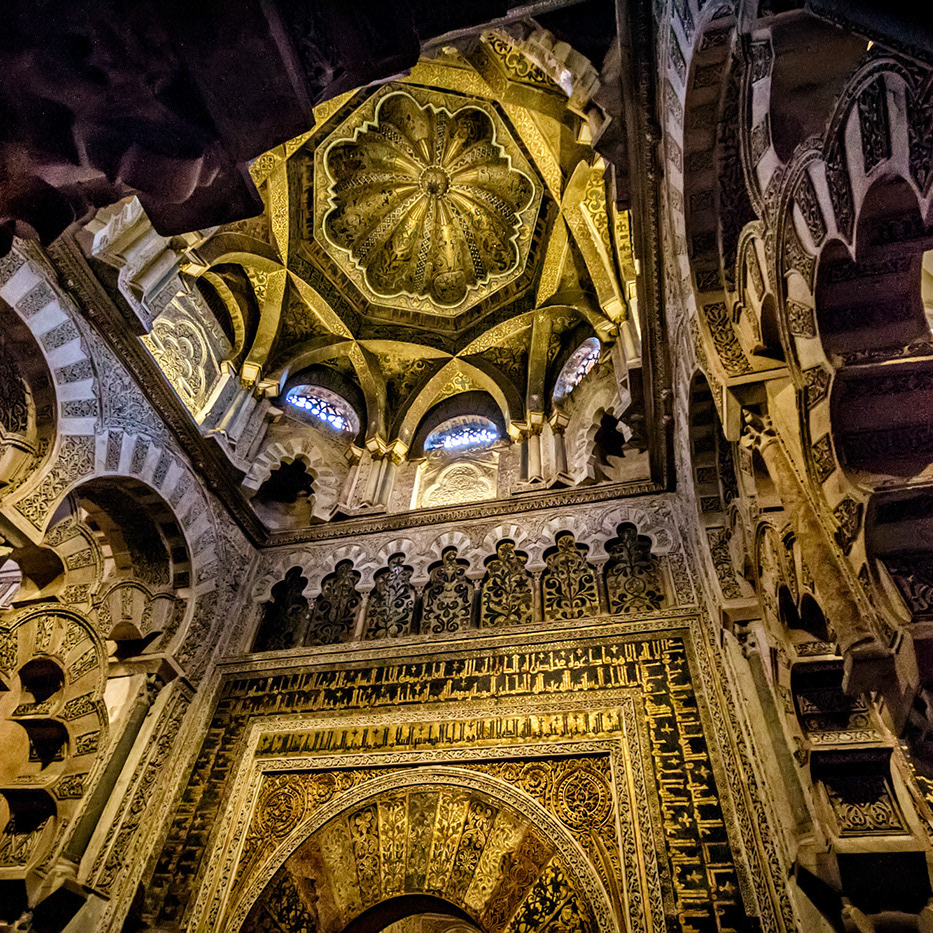The old city is located on a mountaintop with a 150 degree view, surrounded on three sides by a bend in the Tagus River, and contains many historical sites, including the Alcázar, the cathedral (the primate church of Spain), and the Zocodover, a central market place.
From the 4th century to the 16th century about thirty synods were held at Toledo. The earliest, directed against Priscillian, assembled in 400. At the synod of 589 the Visigothic King Reccared declared his conversion from Arianism to Catholicism; the synod of 633 decreed uniformity of catholic liturgy throughout the Visigothic kingdom and took stringent measures against baptized Jews who had relapsed into their former faith. Other councils forbade circumcision, Jewish rites and observance of the Sabbath and festivals. Throughout the seventh century, Jews were flogged, executed, had their property confiscated, were subjected to ruinous taxes, forbidden to trade and, at times, dragged to the baptismal font.[119] The council of 681 assured to the archbishop of Toledo the primacy of Spain. At Guadamur, very close to Toledo, was dug in 1858 the Treasure of Guarrazar, the best example of Visigothic art in Spain.
As nearly one hundred early canons of Toledo found a place in the Decretum Gratiani, they exerted an important influence on the development of ecclesiastical law. The synod of 1565-1566 concerned itself with the execution of the decrees of the Council of Trent; and the last council held at Toledo, 1582-1583, was guided in detail by Philip II.
Toledo was famed for religious tolerance and had large communities of Muslims and Jews until they were expelled from Spain in 1492 (Jews) and 1502 (Mudejars). Today's city contains the religious monuments the Synagogue of Santa María la Blanca, the Synagogue of El Transito, Mosque of Cristo de la Luz and the church of San Sebastián dating from before the expulsion, still maintained in good condition. Among Ladino-speaking Sephardi Jews, in their various diasporas, the family name Toledano is still prevalent—indicating an ancestry traced back to this city (the name is also attested among non-Jews in various Spanish-speaking countries).
In the 13th century, Toledo was a major cultural centre under the guidance of Alfonso X, called "El Sabio" ("the Wise") for his love of learning. The Toledo School of Translators, that had commenced under Archbishop Raymond of Toledo, continued to bring vast stores of knowledge to Europe by rendering great academic and philosophical works in Arabic into Latin. The Palacio de Galiana, built in the Mudéjar style, is one of the monuments that remain from that period.
The Cathedral of Toledo (Catedral de Toledo) was built between 1226–1493 and modeled after the Bourges Cathedral, though it also combines some characteristics of the Mudéjar style. It is remarkable for its incorporation of light and features the Baroque altar called El Transparente, several stories high, with fantastic figures of stucco, paintings, bronze castings, and multiple colors of marble, a masterpiece of medieval mixed media by Narciso Tomé topped by the daily effect for just a few minutes of a shaft of light from which this feature of the cathedral derives its name. Two notable bridges secured access to Toledo across the Tajo, the Alcántara bridge and the later built San Martín bridge.
The Monasterio de San Juan de los Reyes is a Franciscan monastery, built 1477–1504, in a remarkable combination of Gothic-Spanish-Flemish style with Mudéjar ornamentation.
Toledo was home to El Greco for the latter part of his life, and is the subject of some of his most famous paintings, including The Burial of the Count of Orgaz, exhibited in the Church of Santo Tomé.
When Philip II moved the royal court from Toledo to Madrid in 1561, the old city went into a slow decline from which it never recovered.
From Wikipedia, the free encyclopedia
